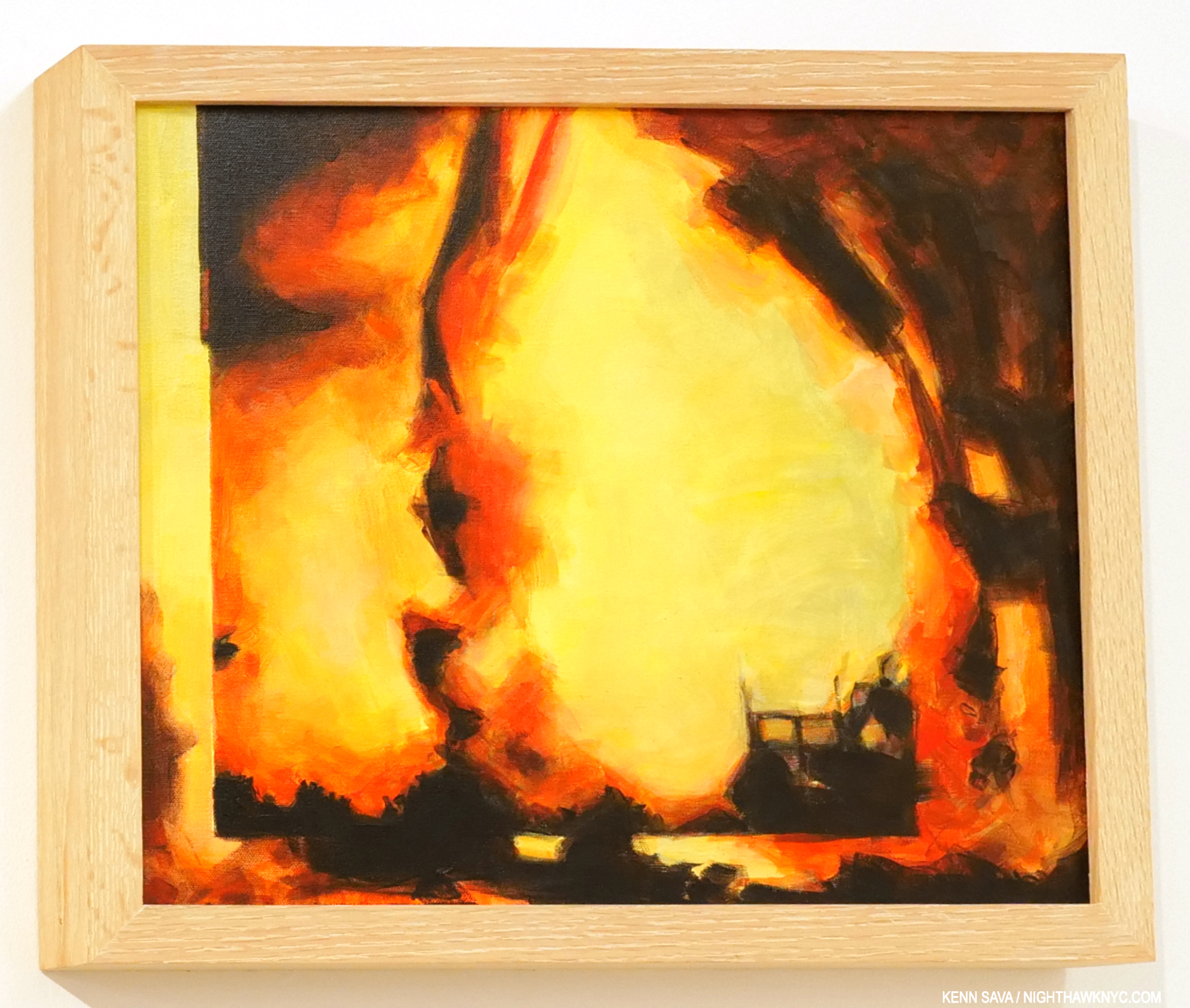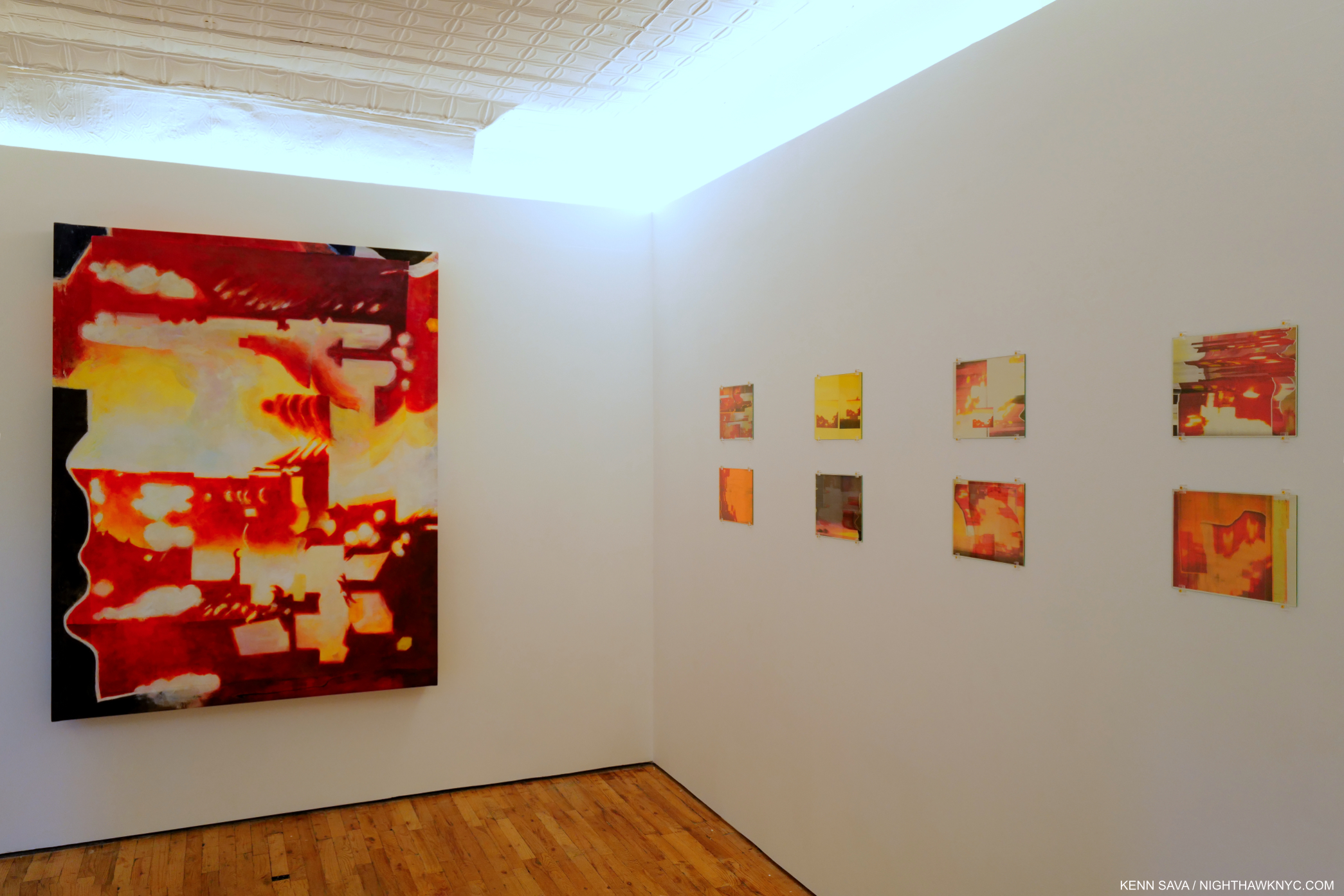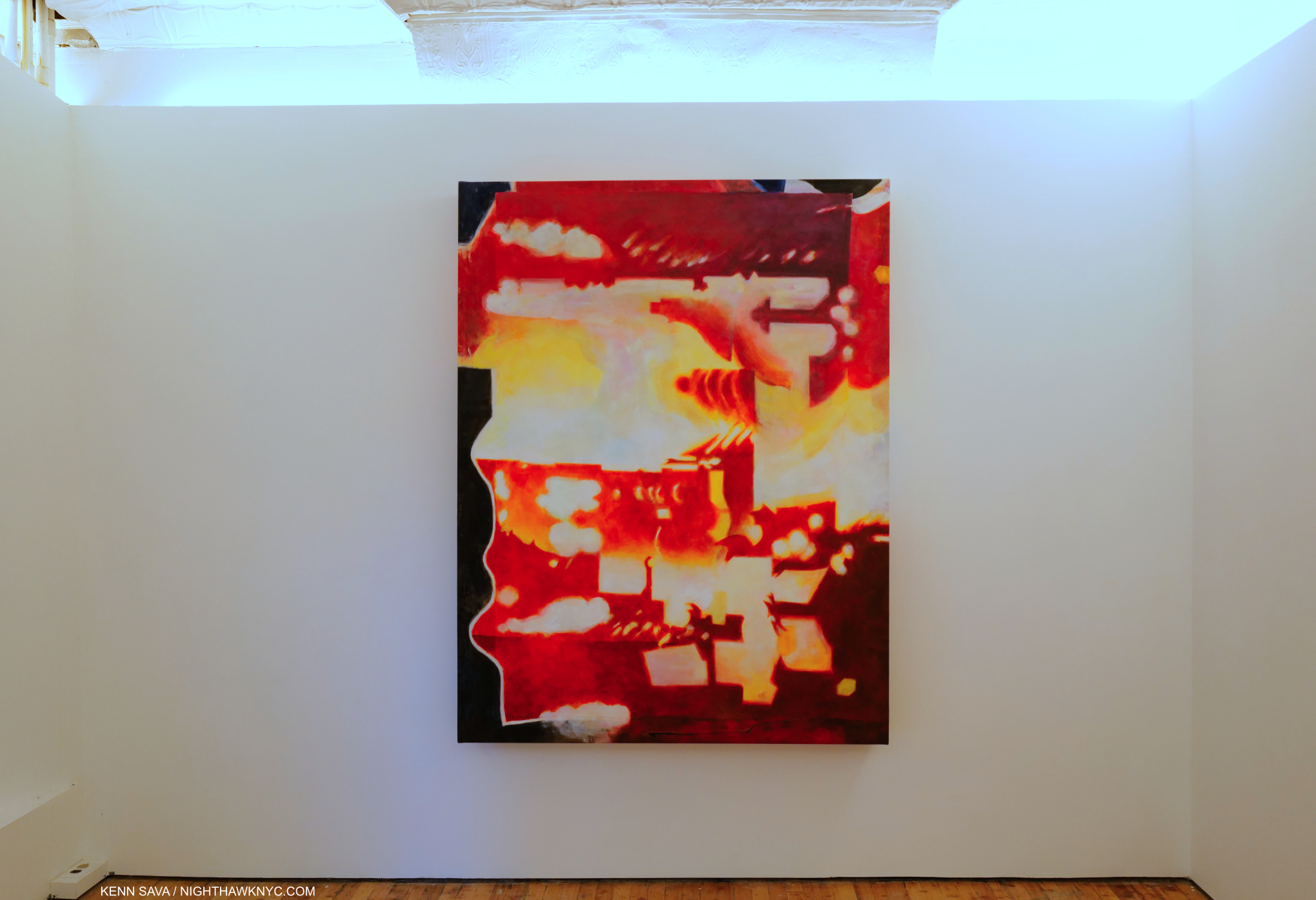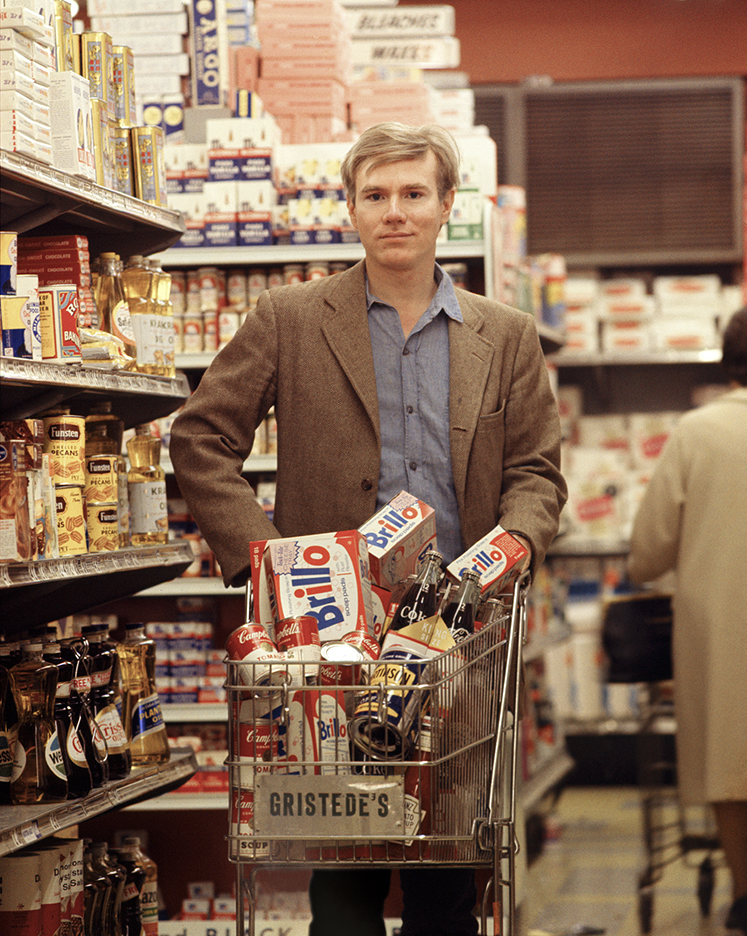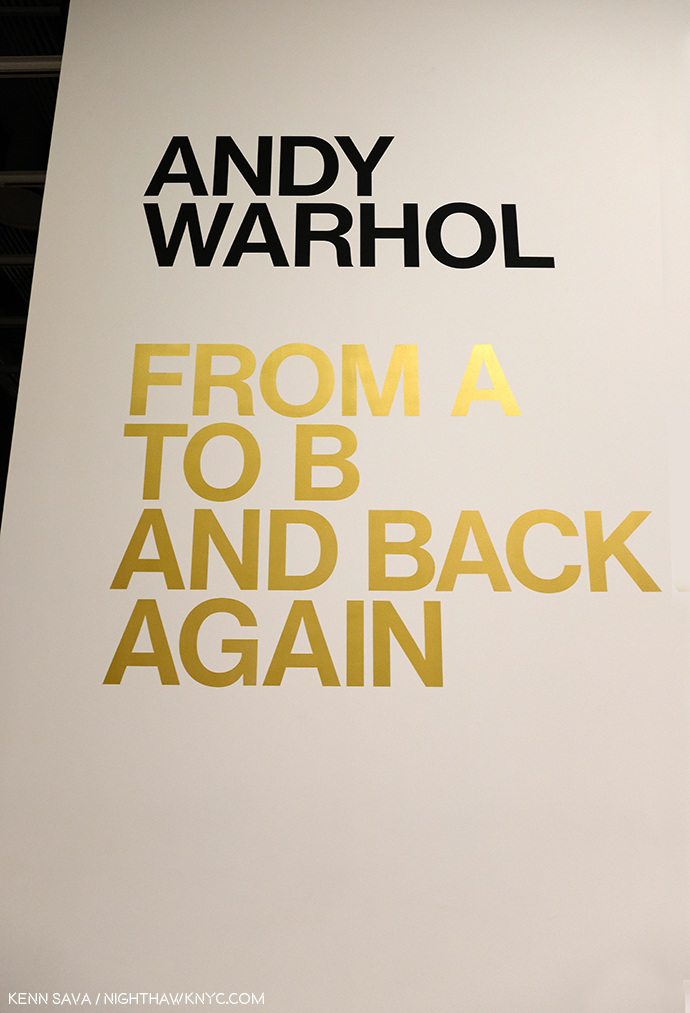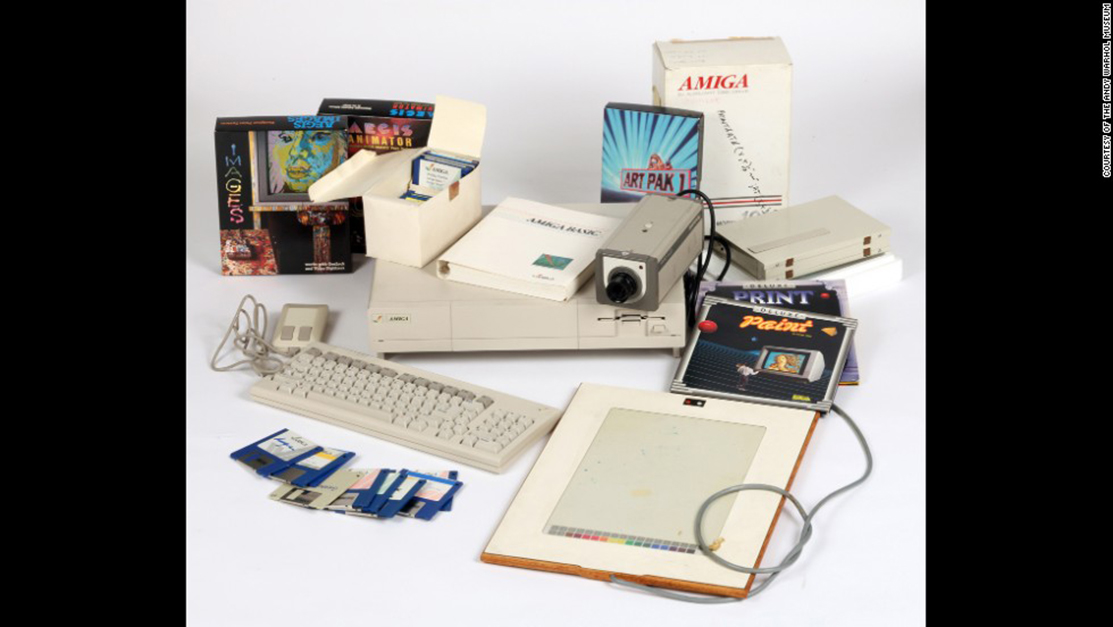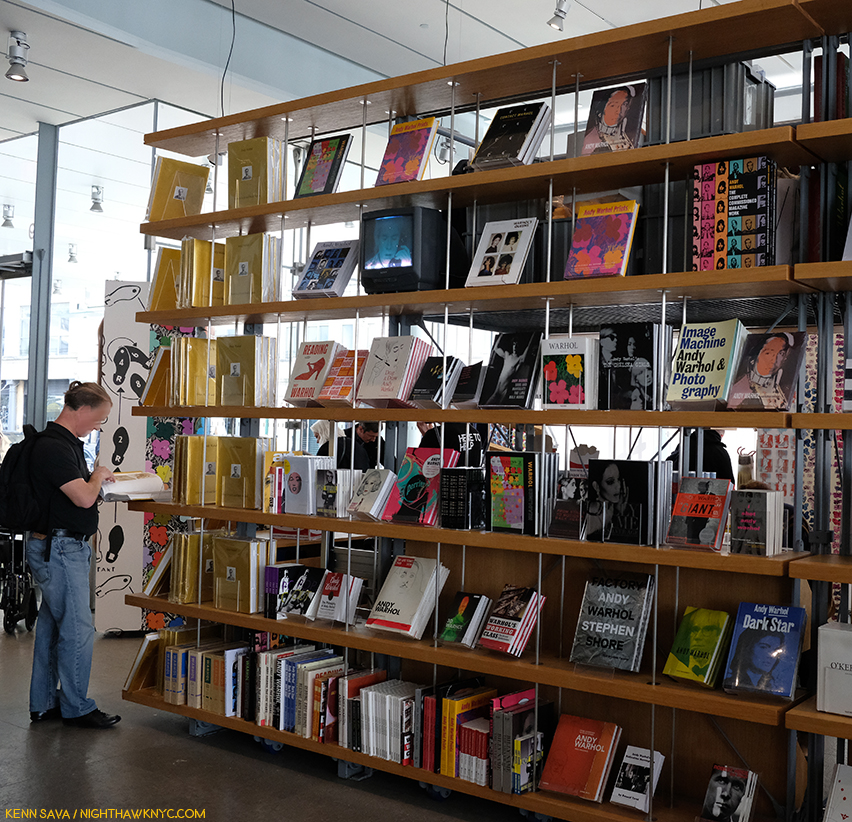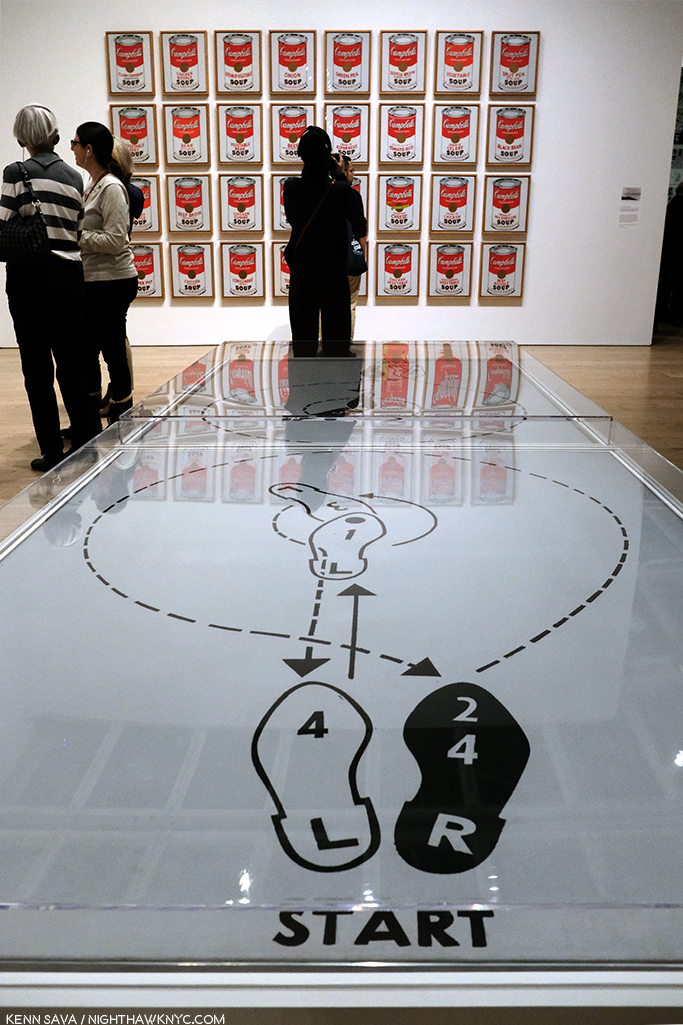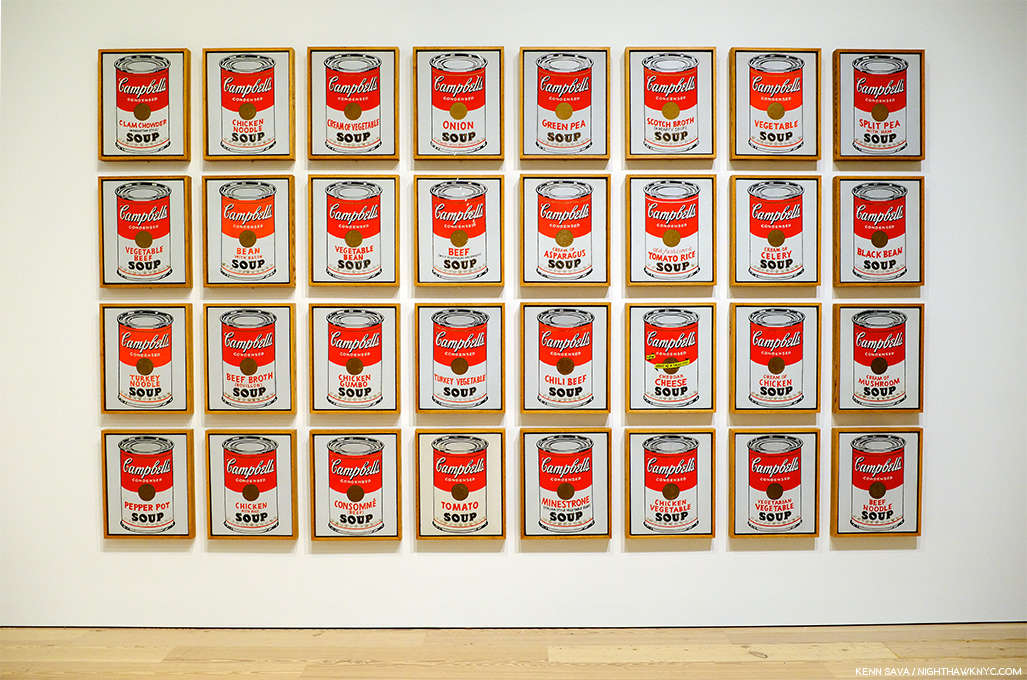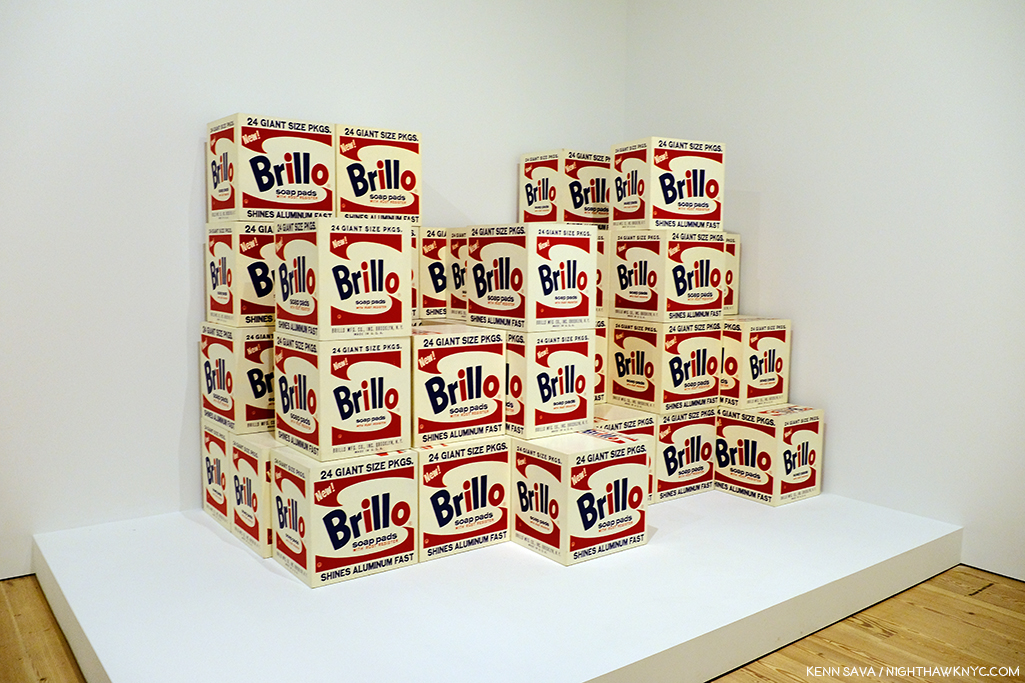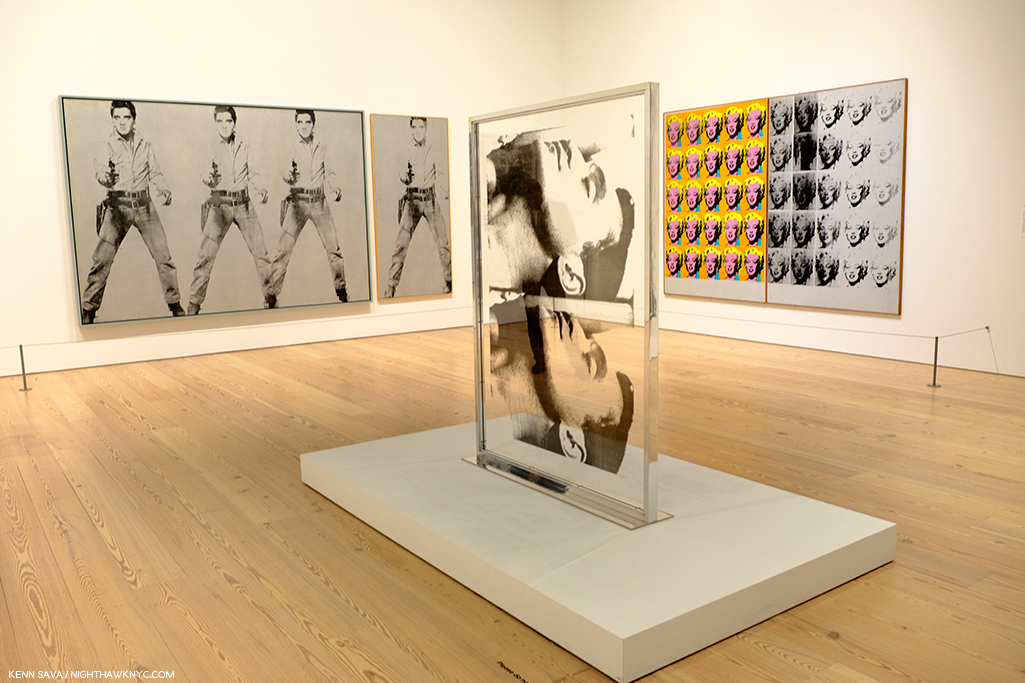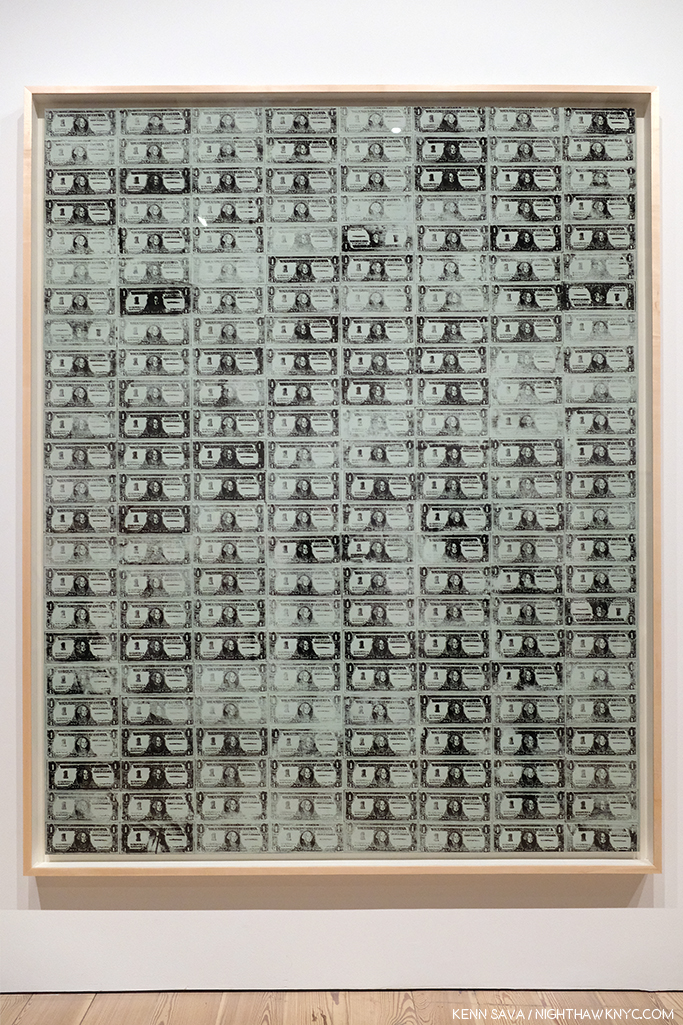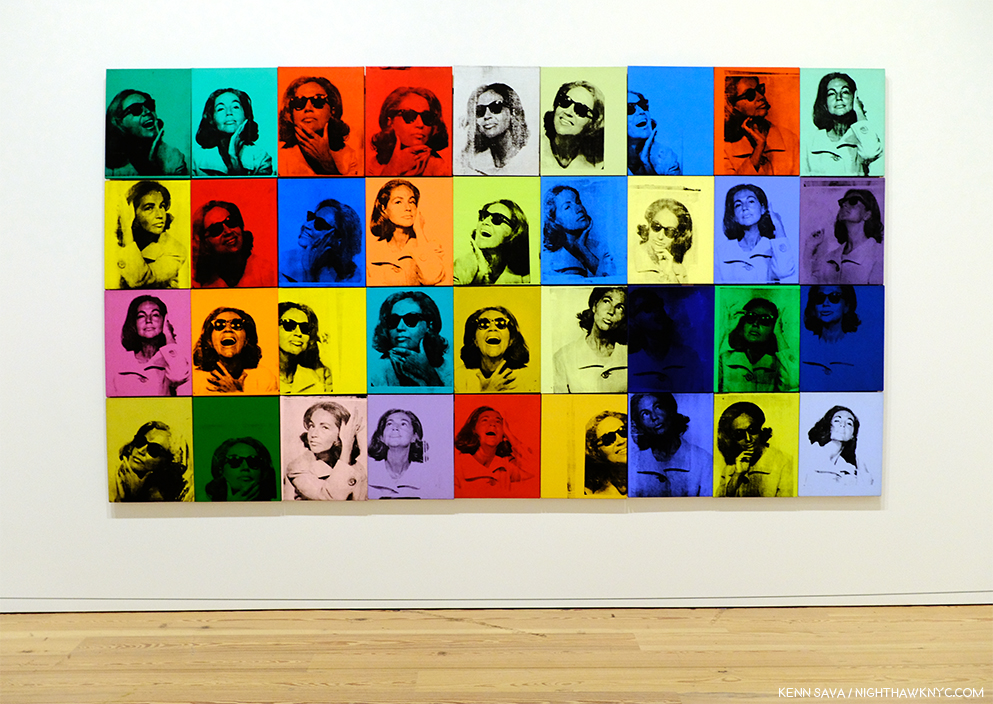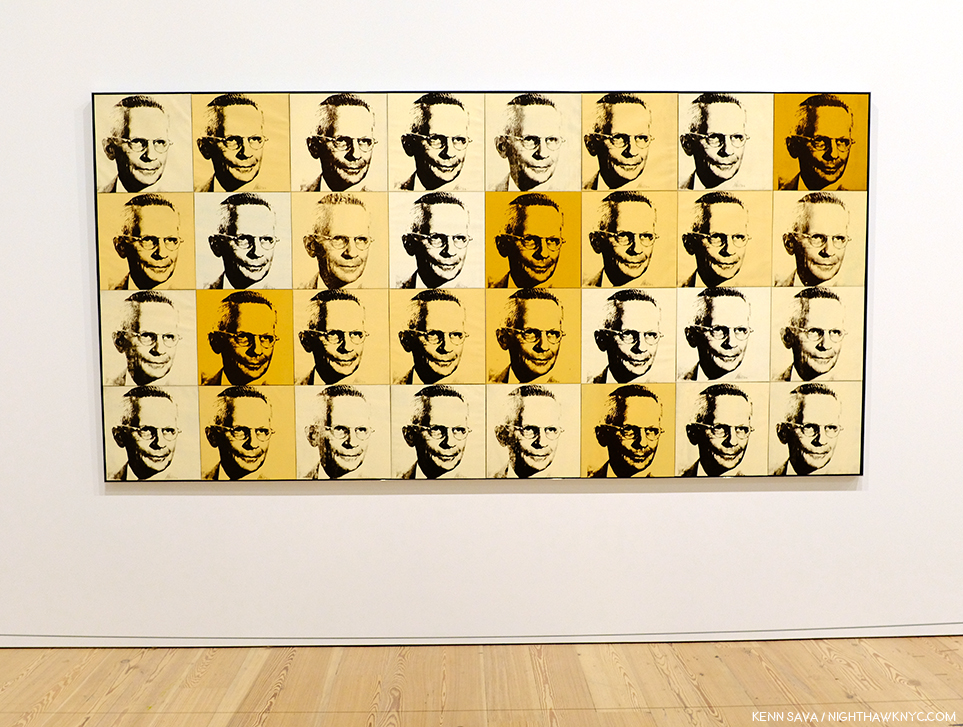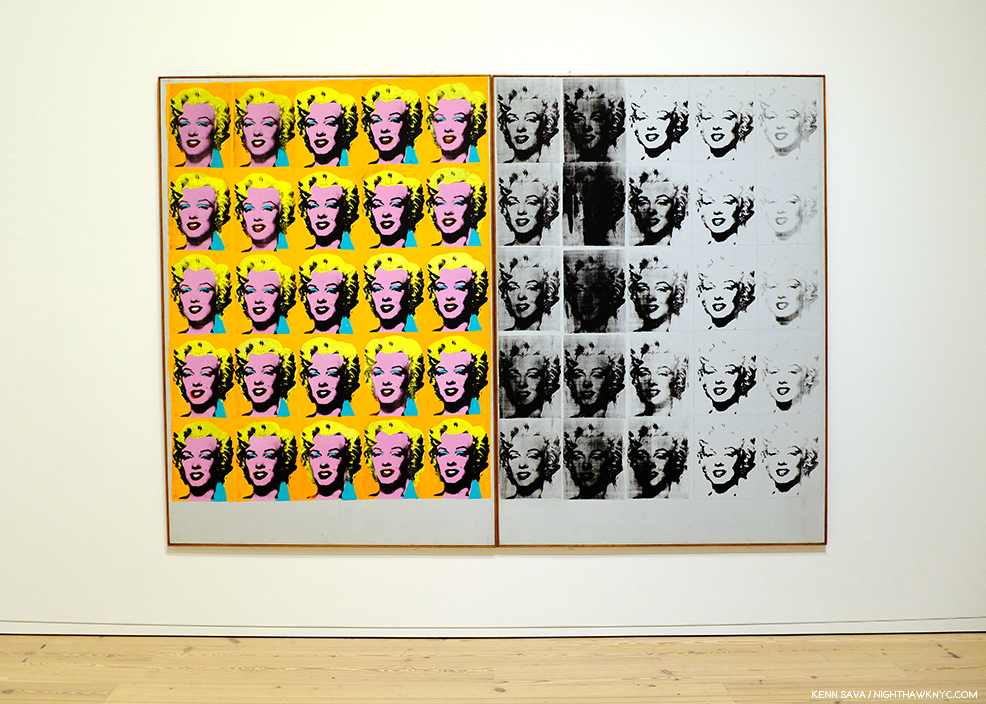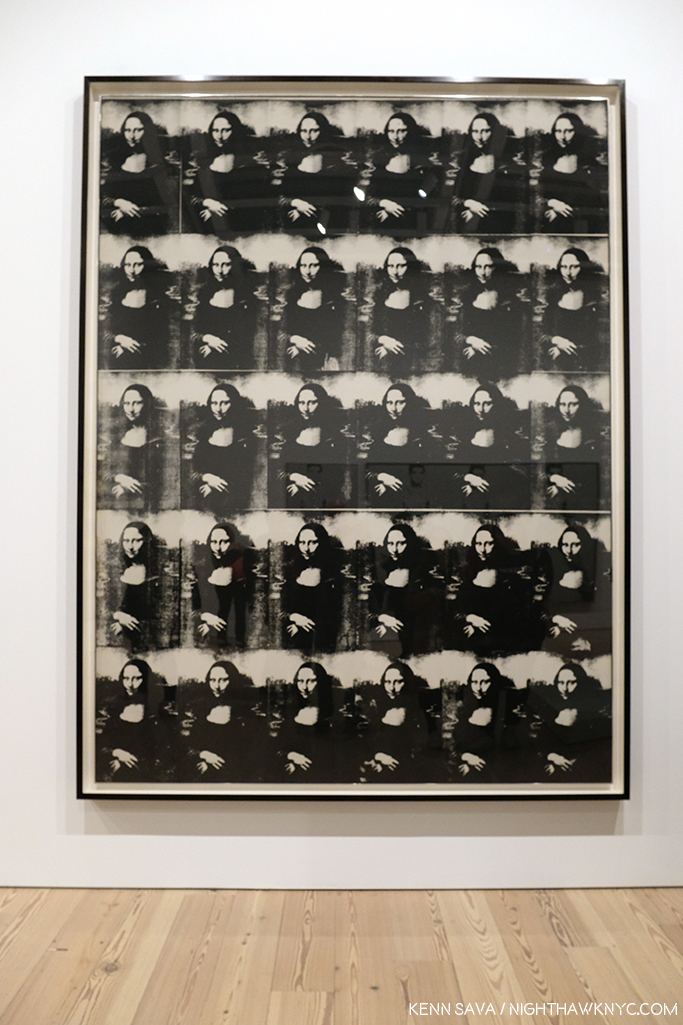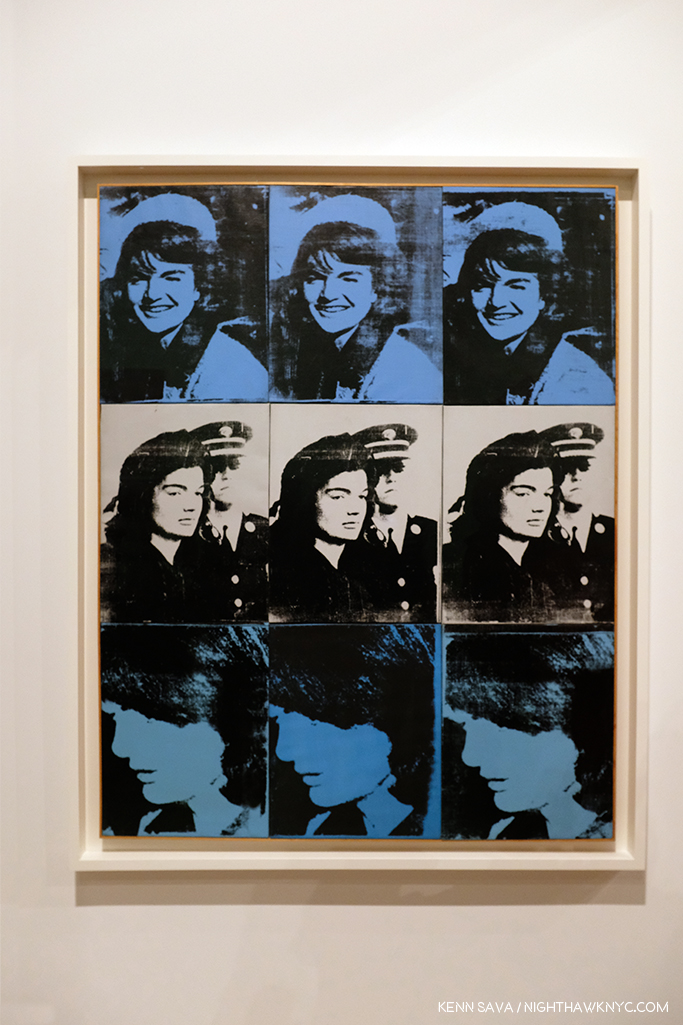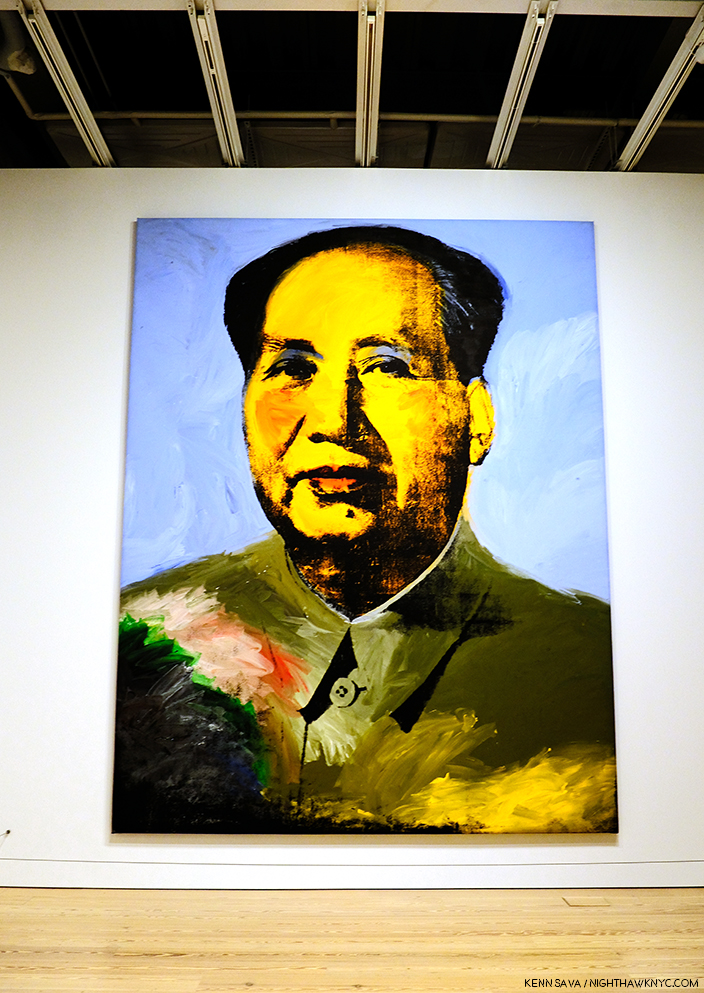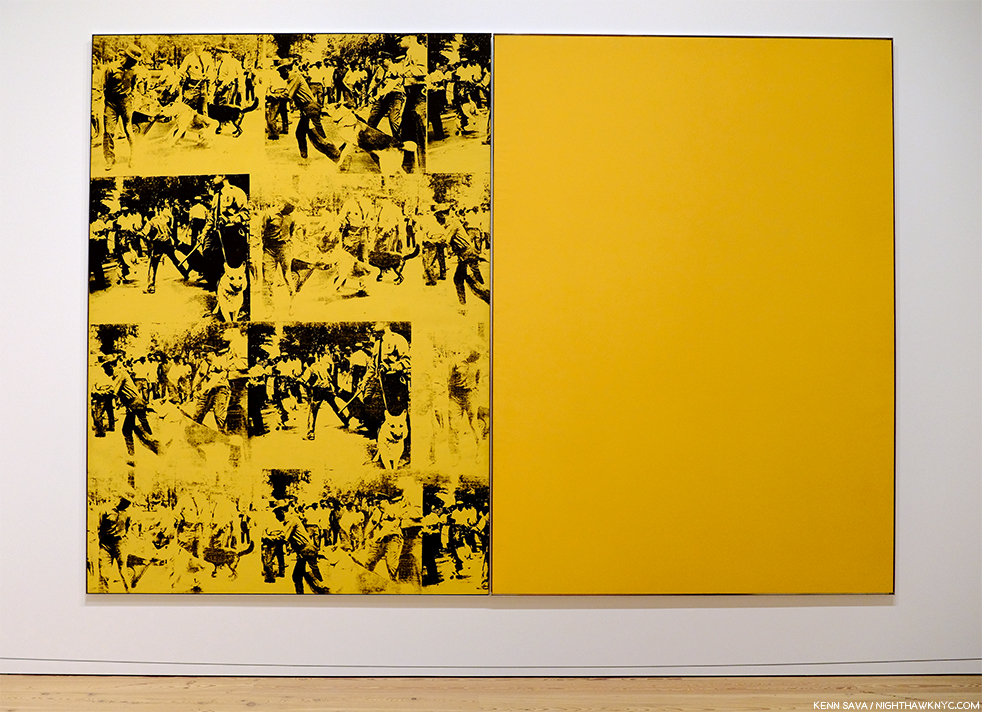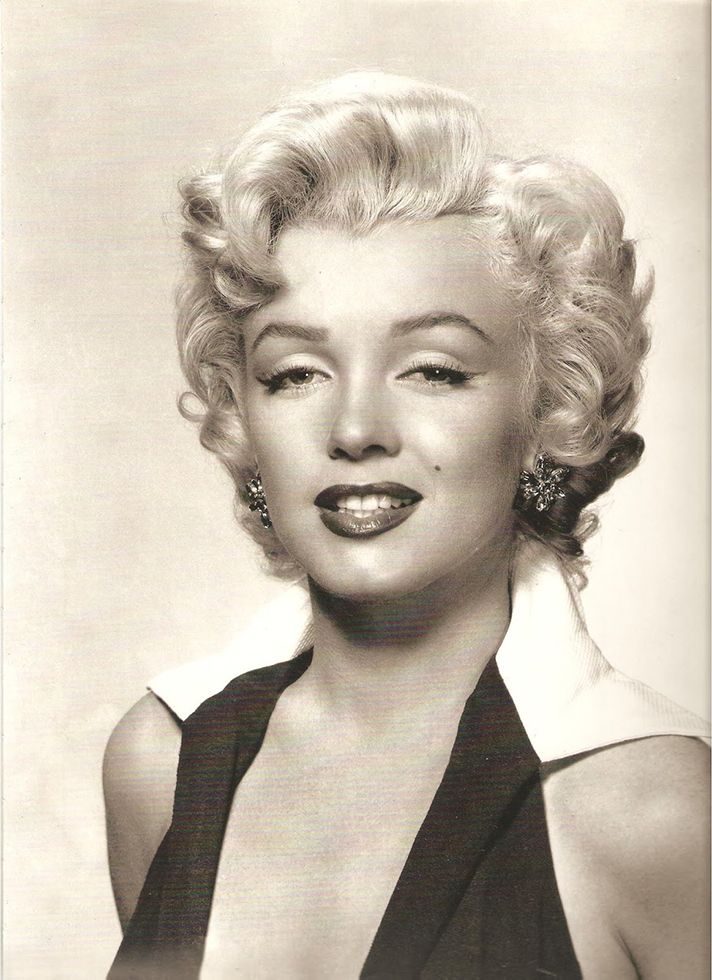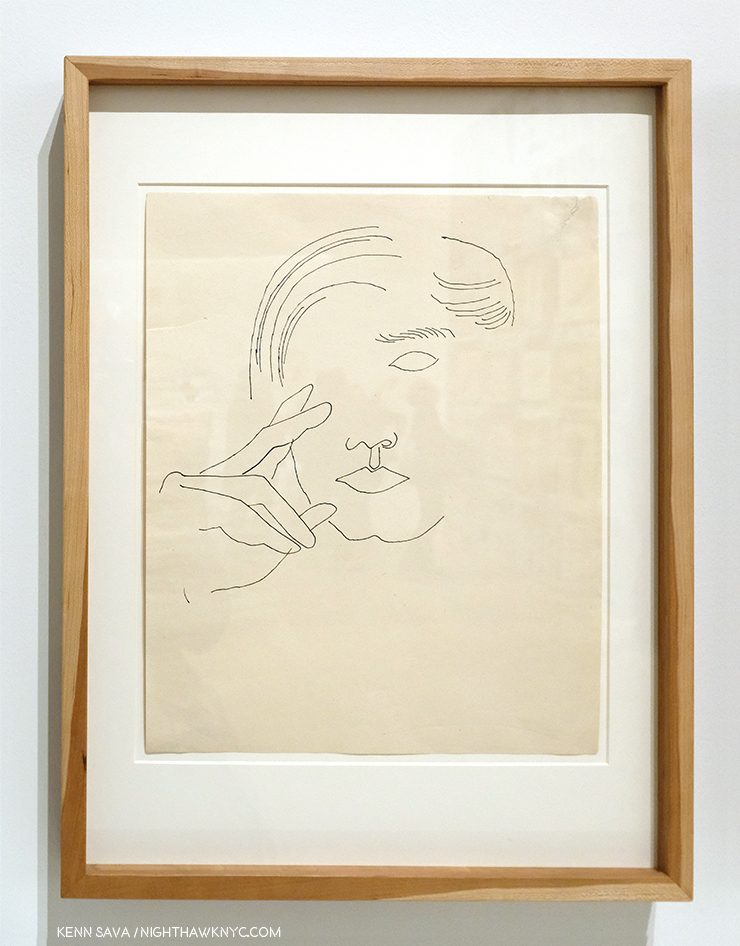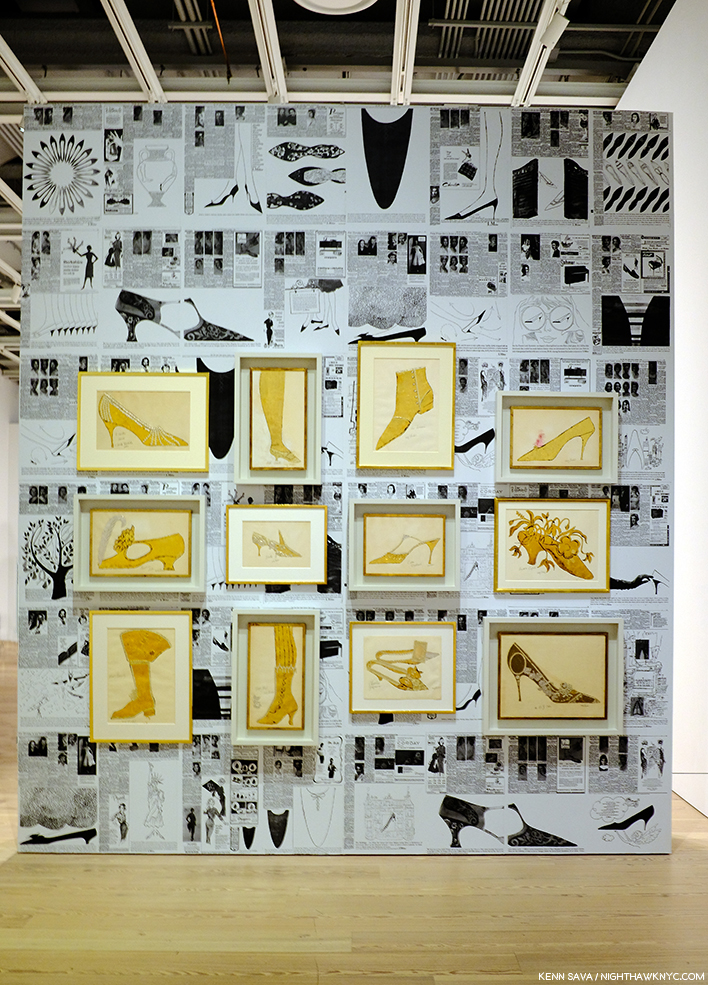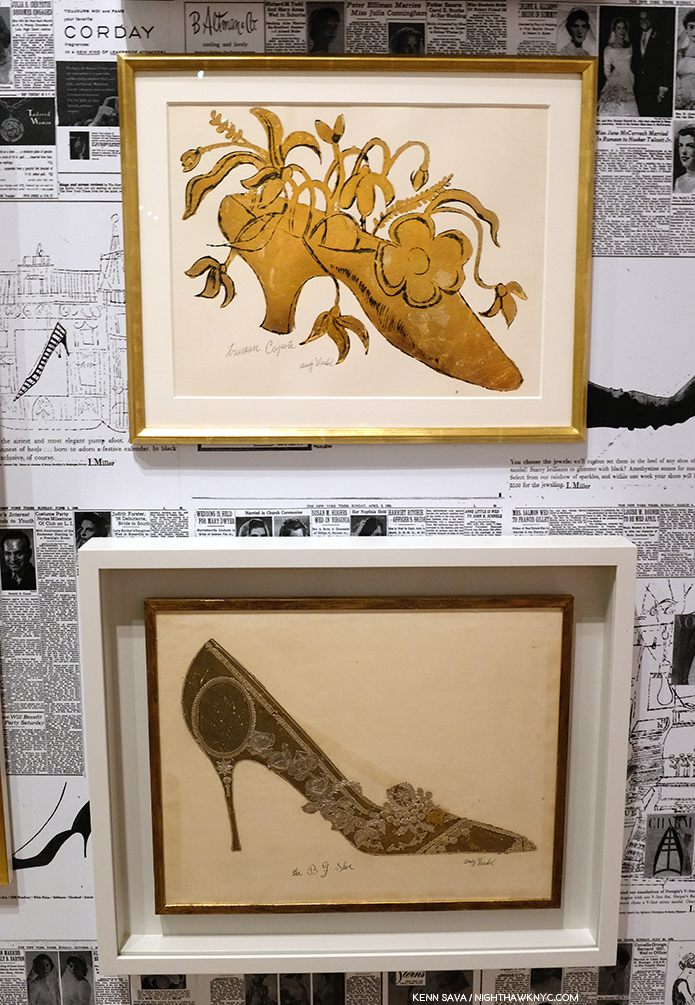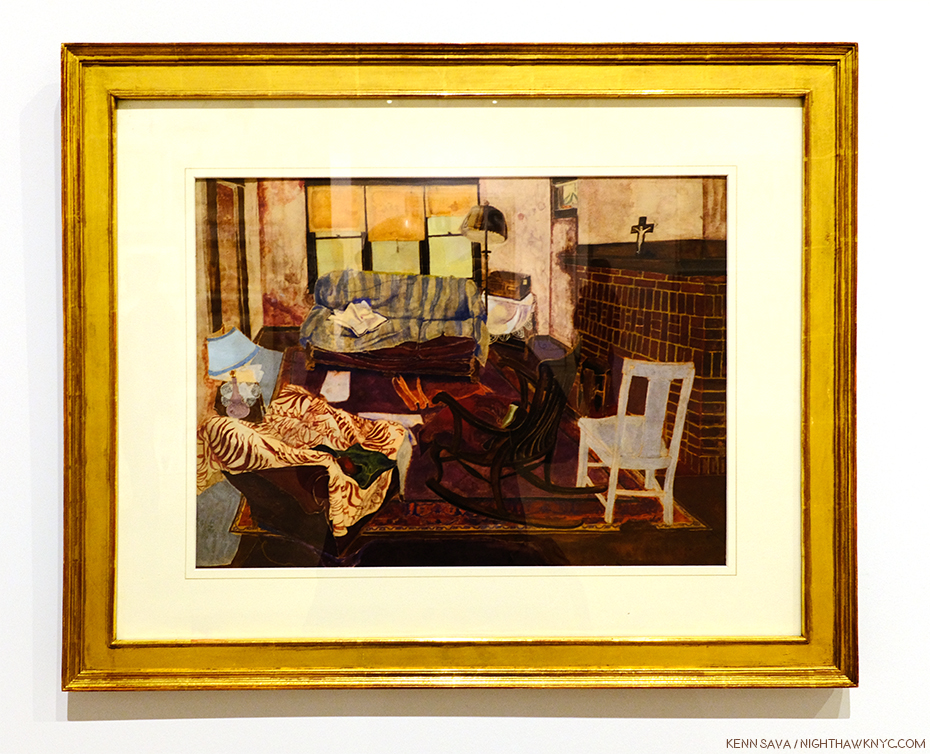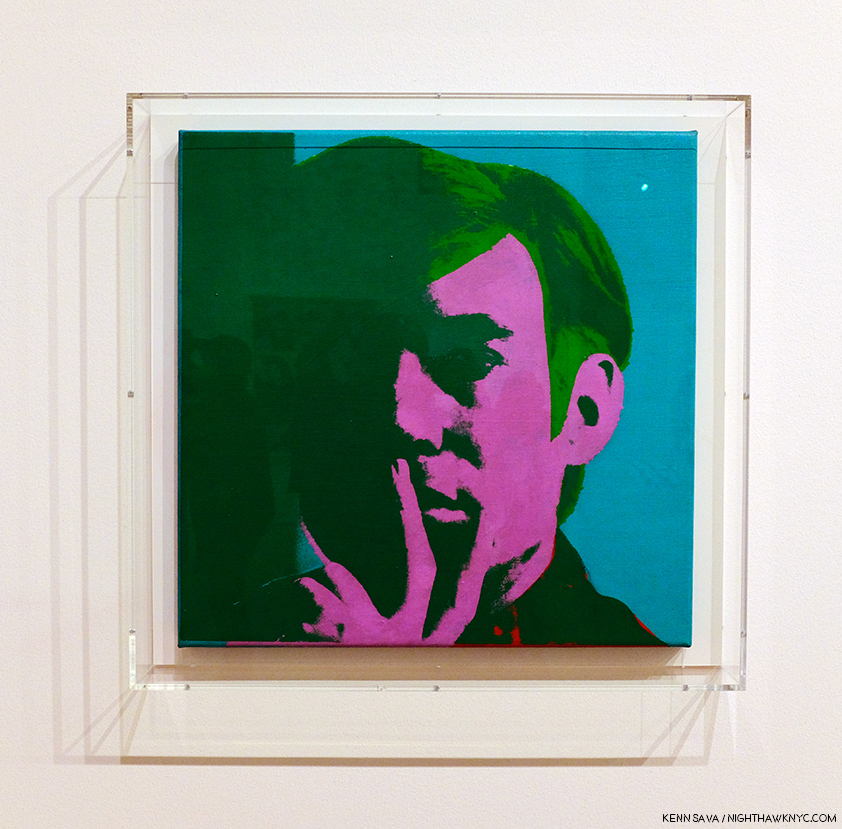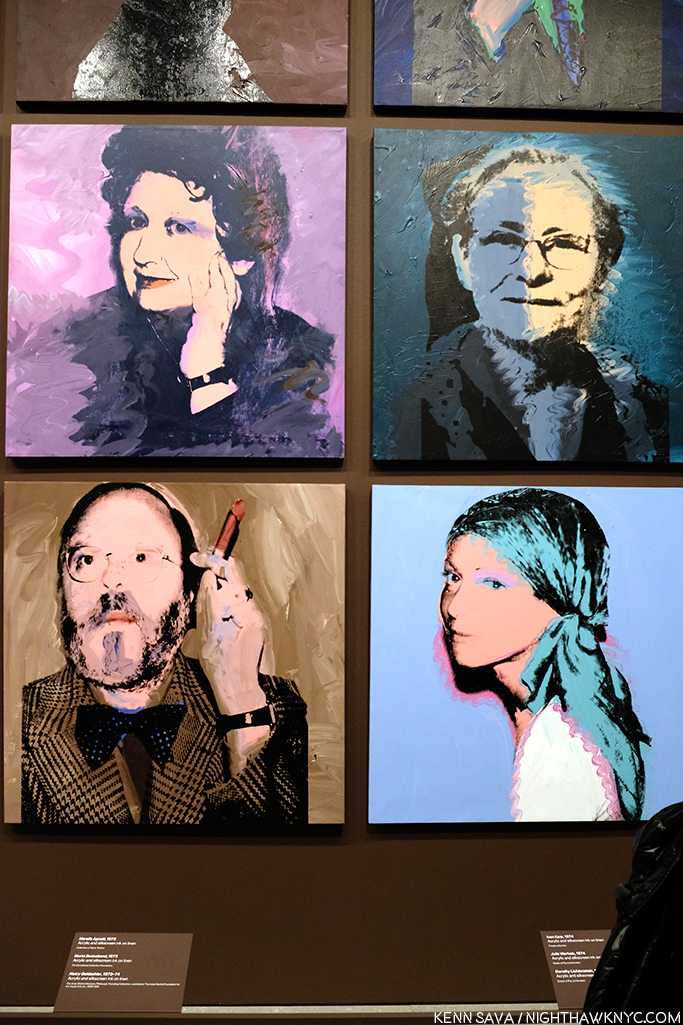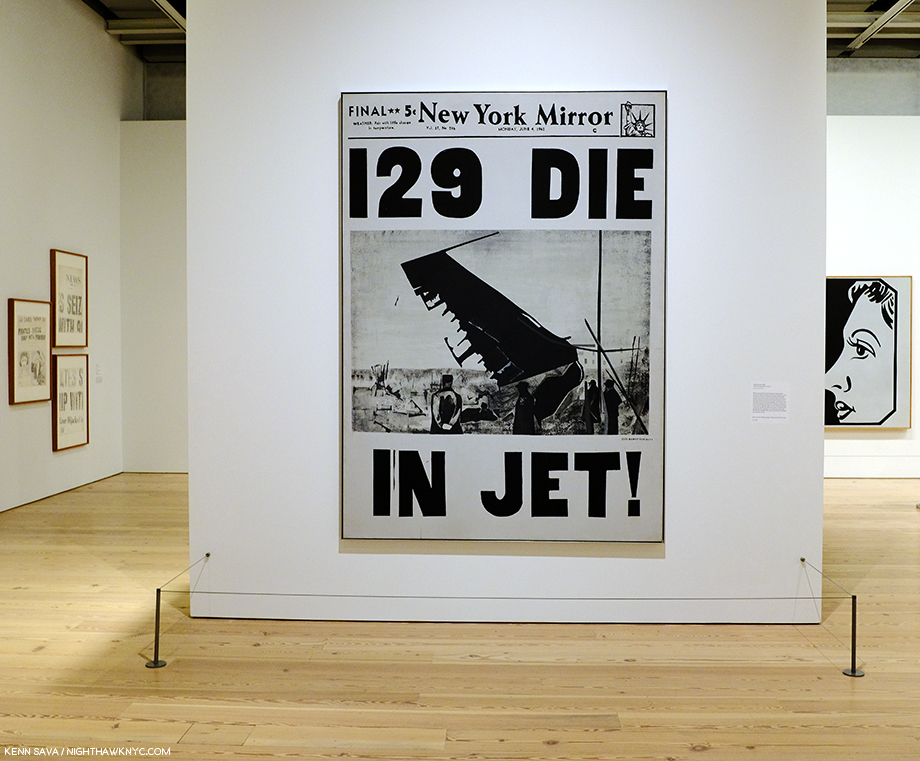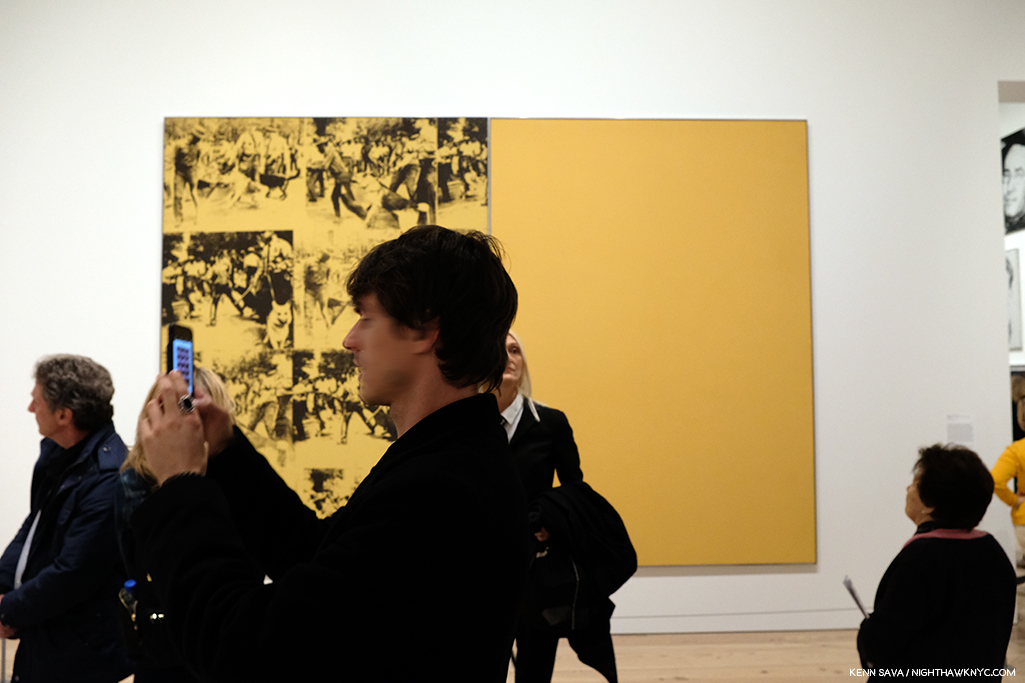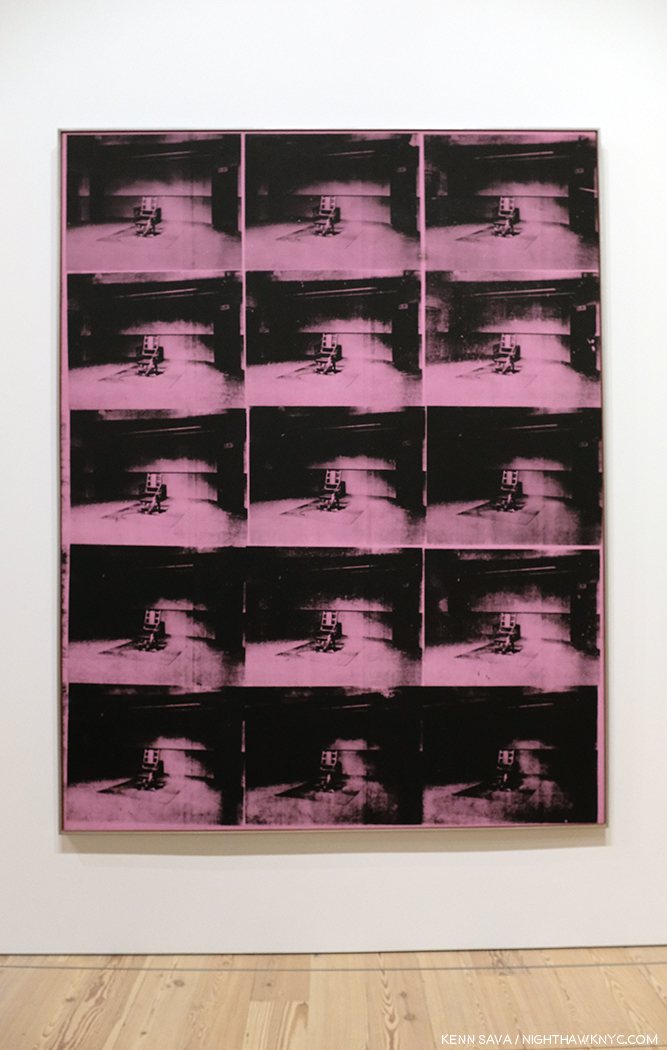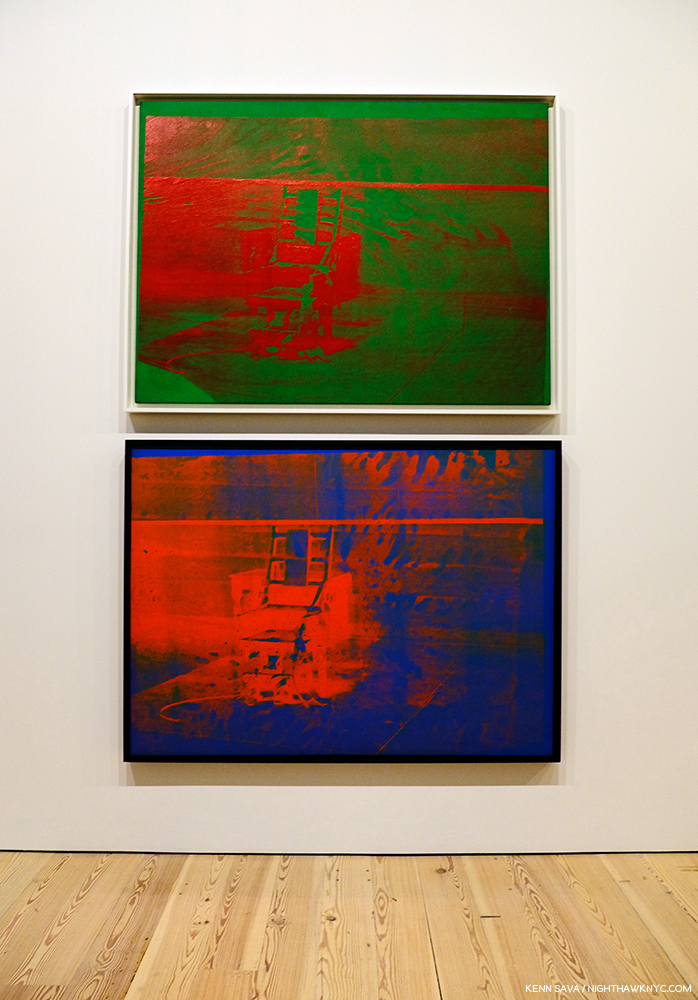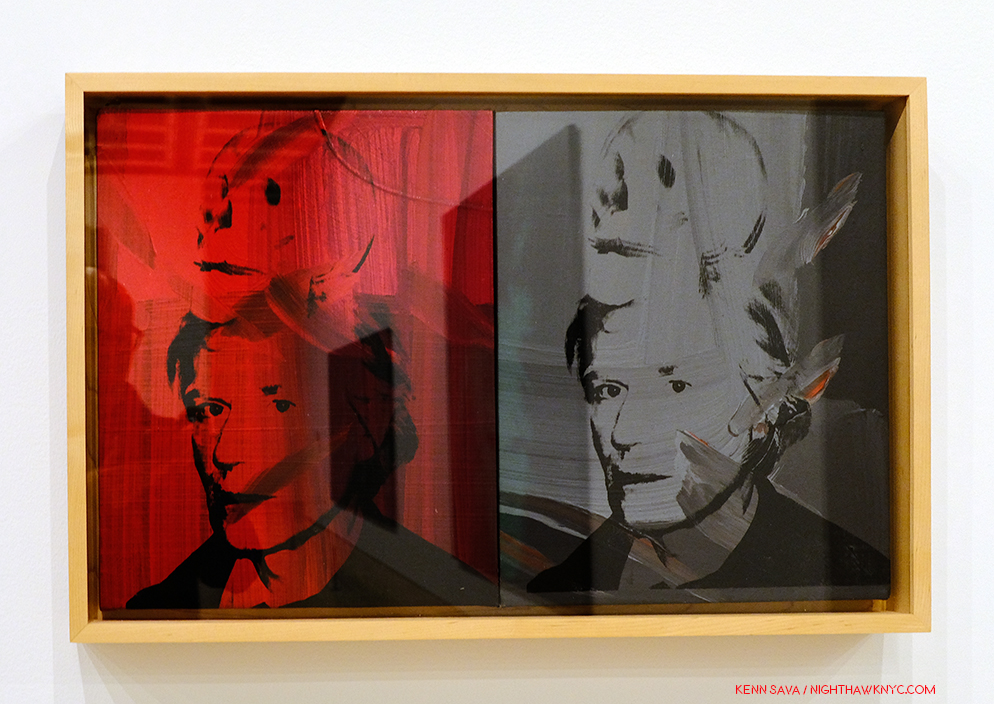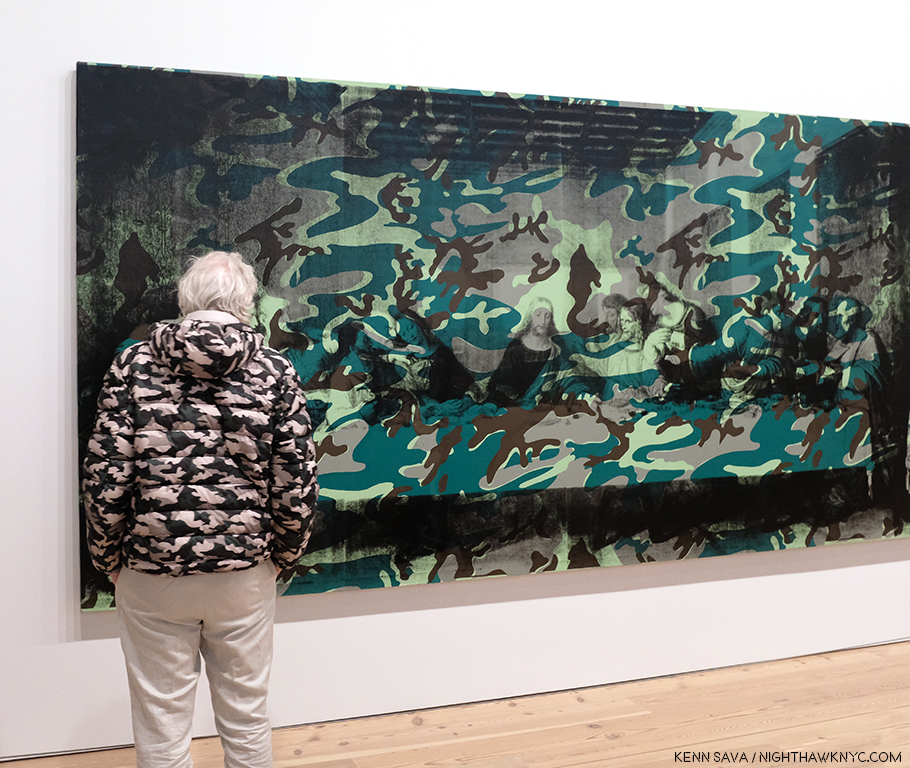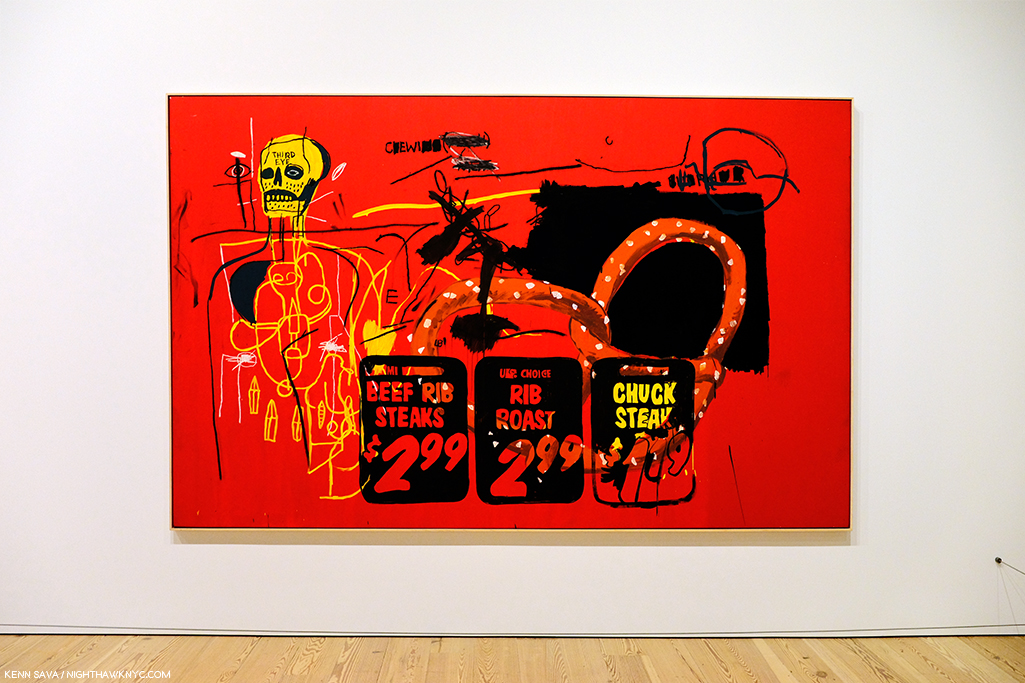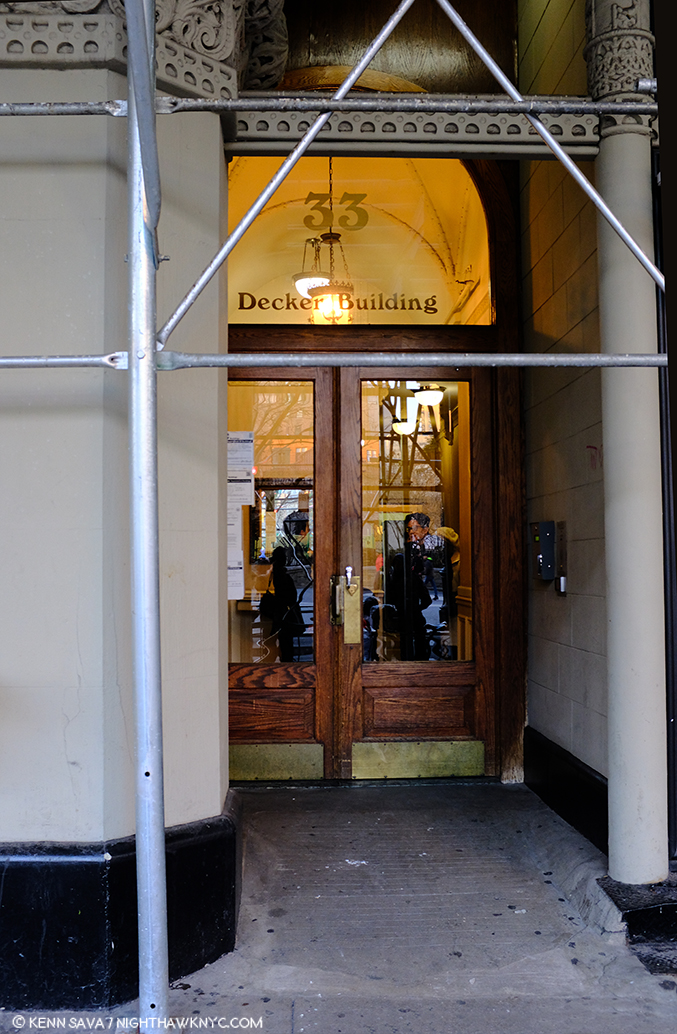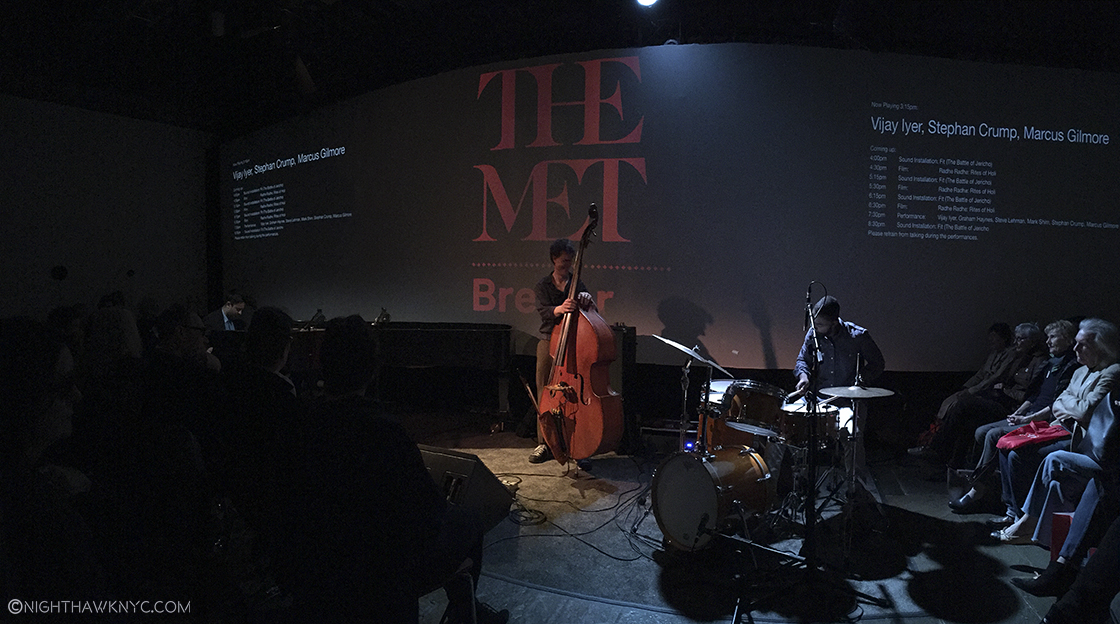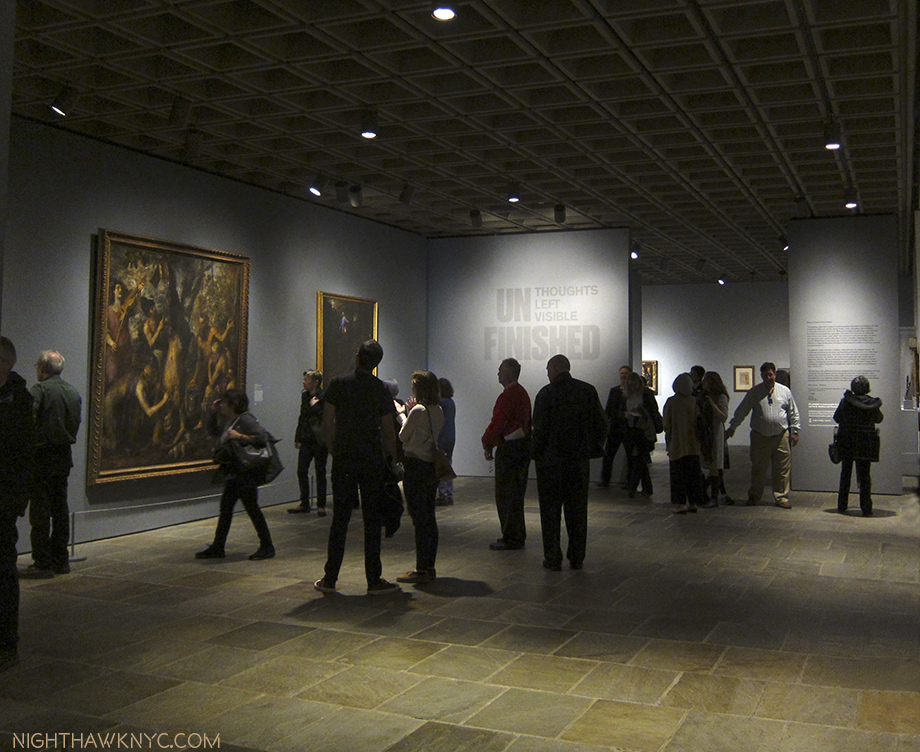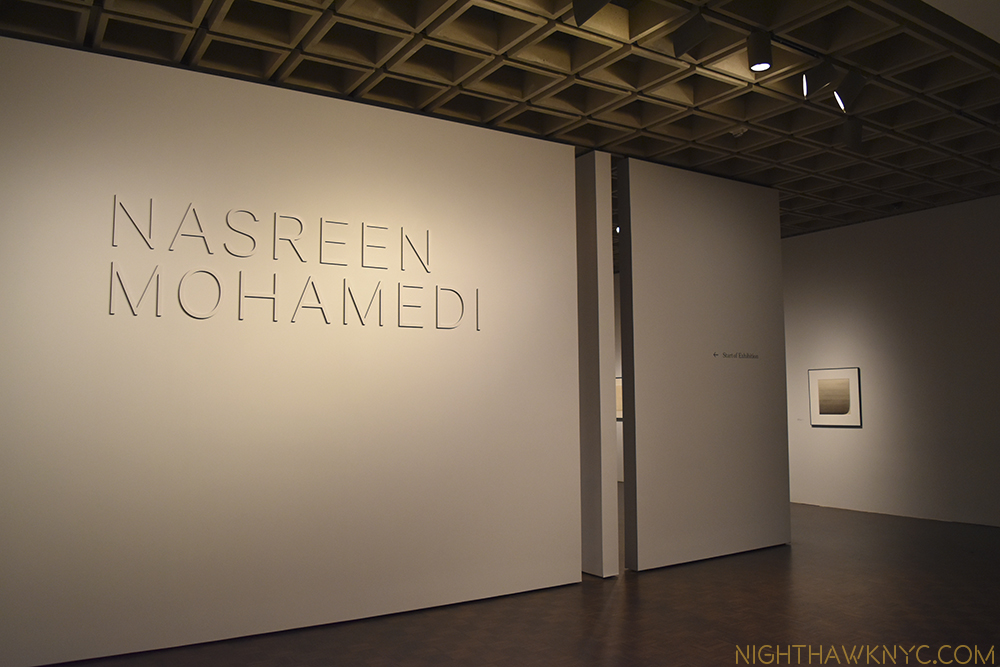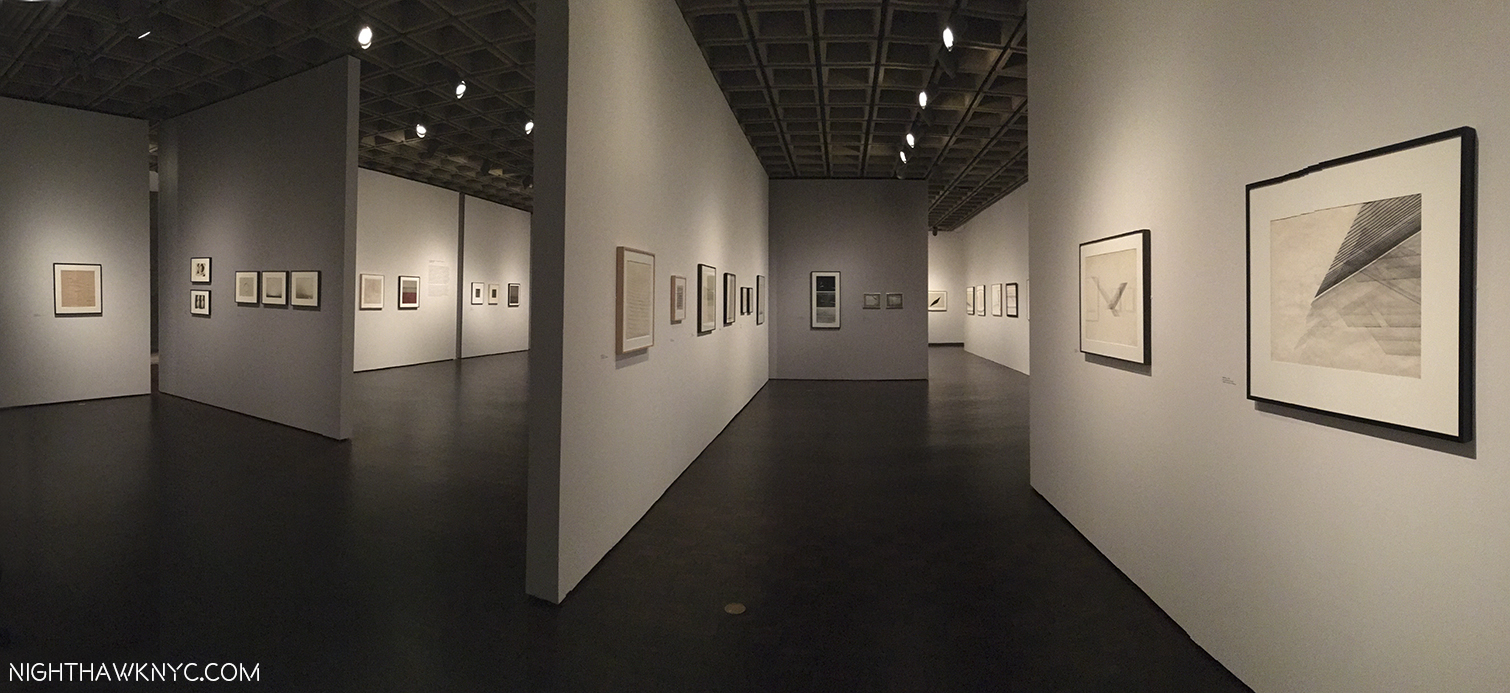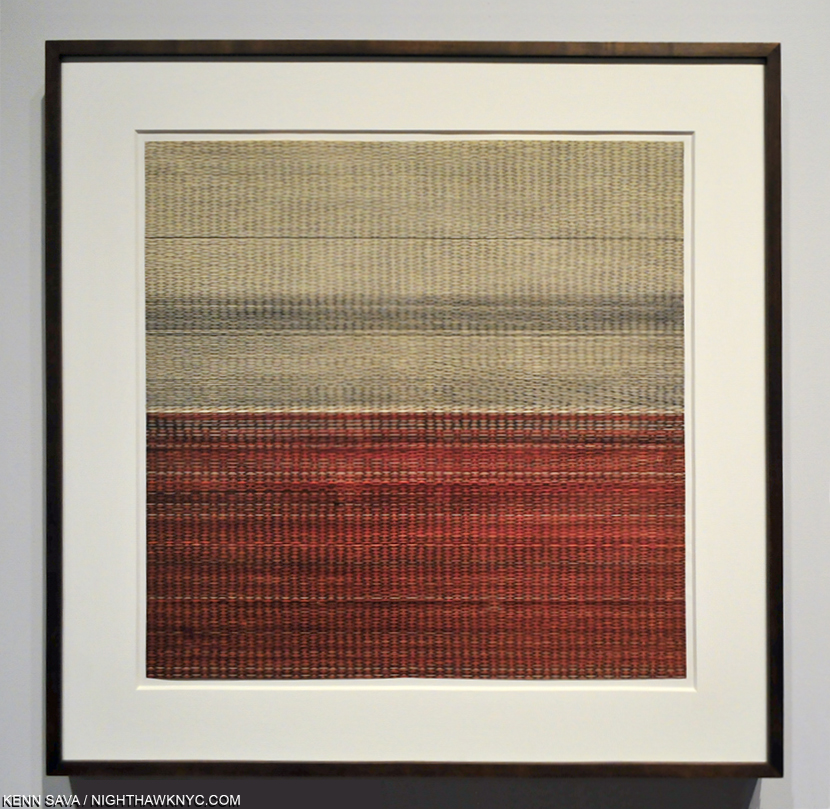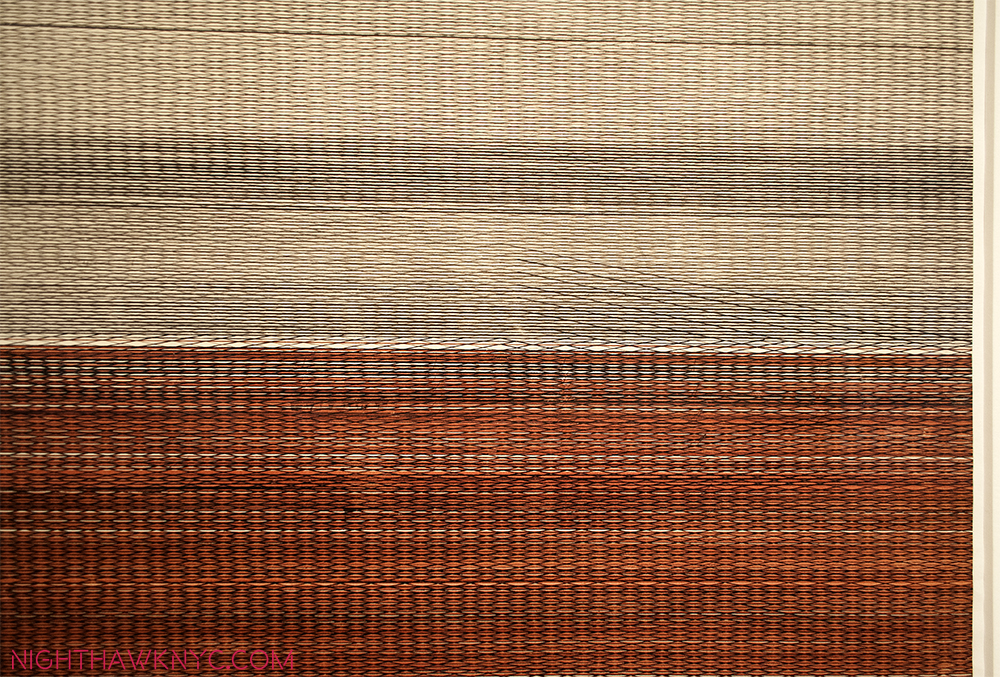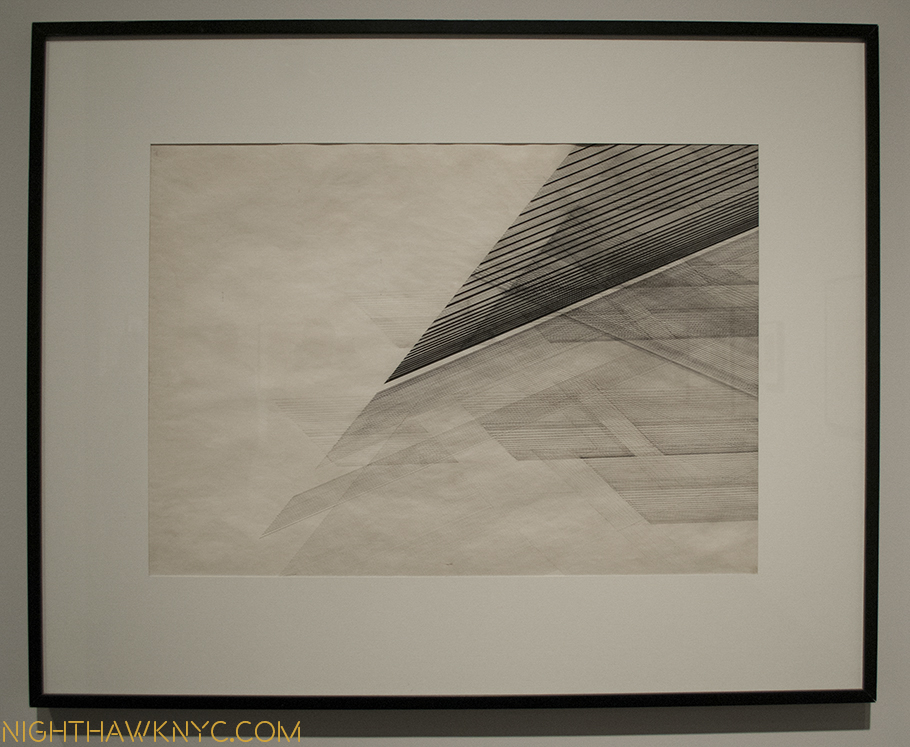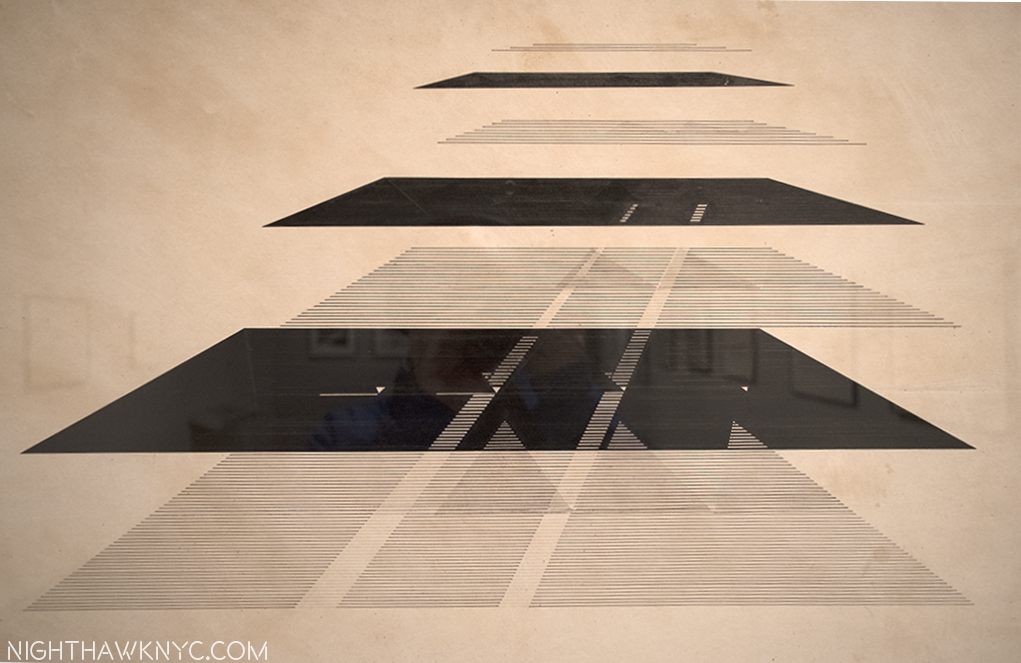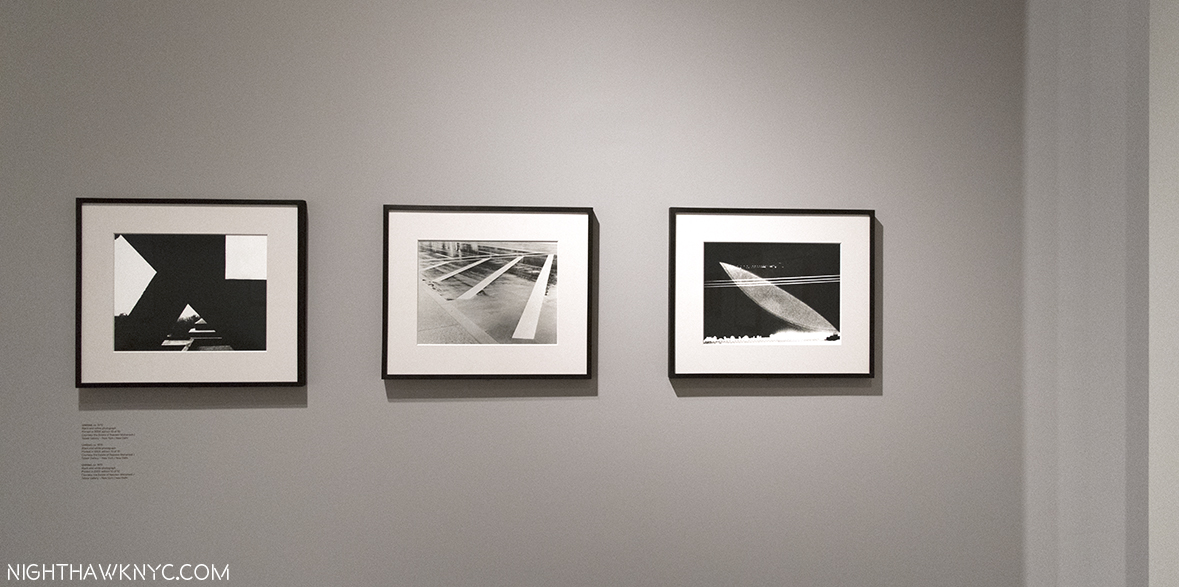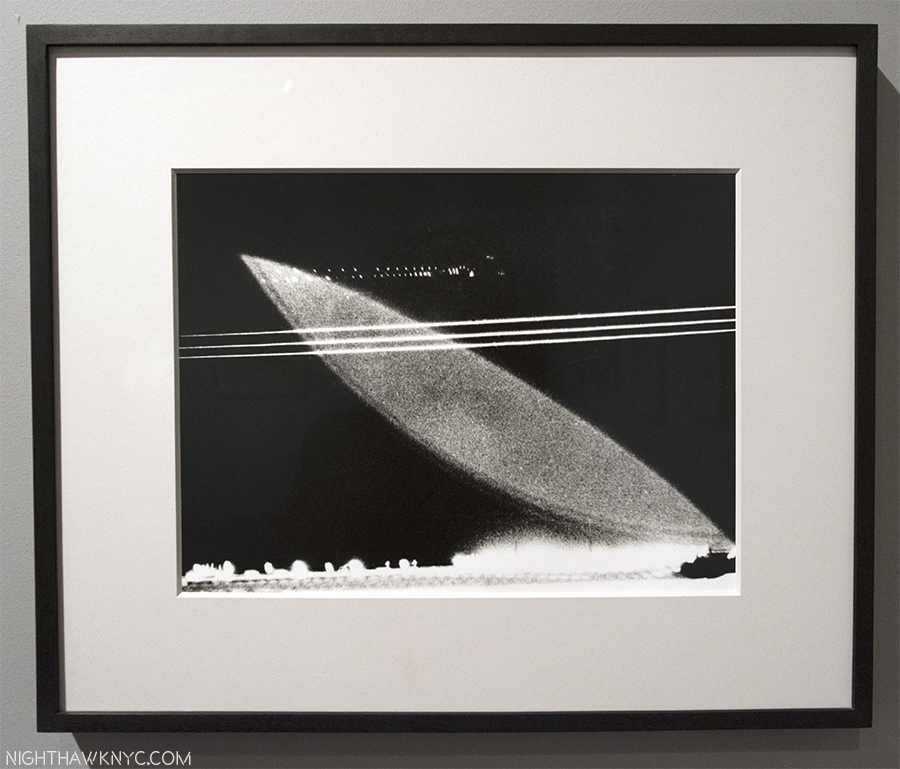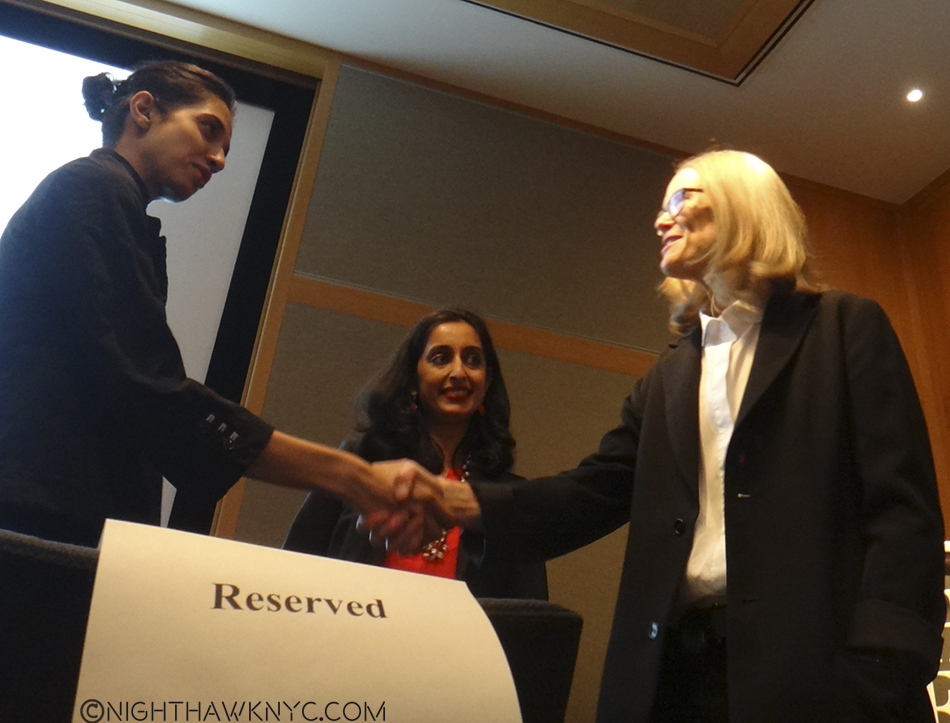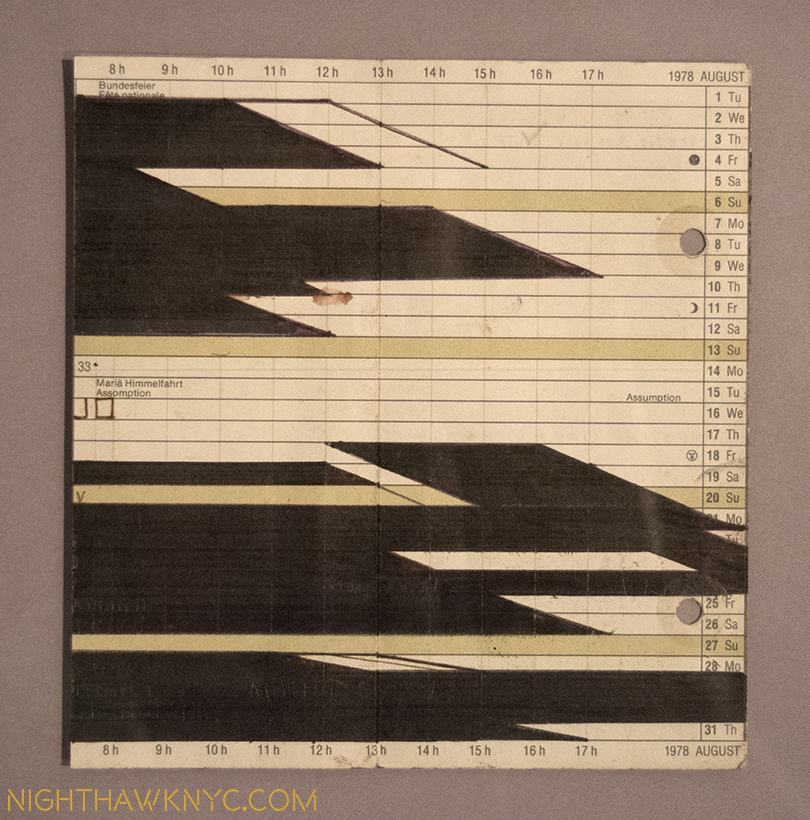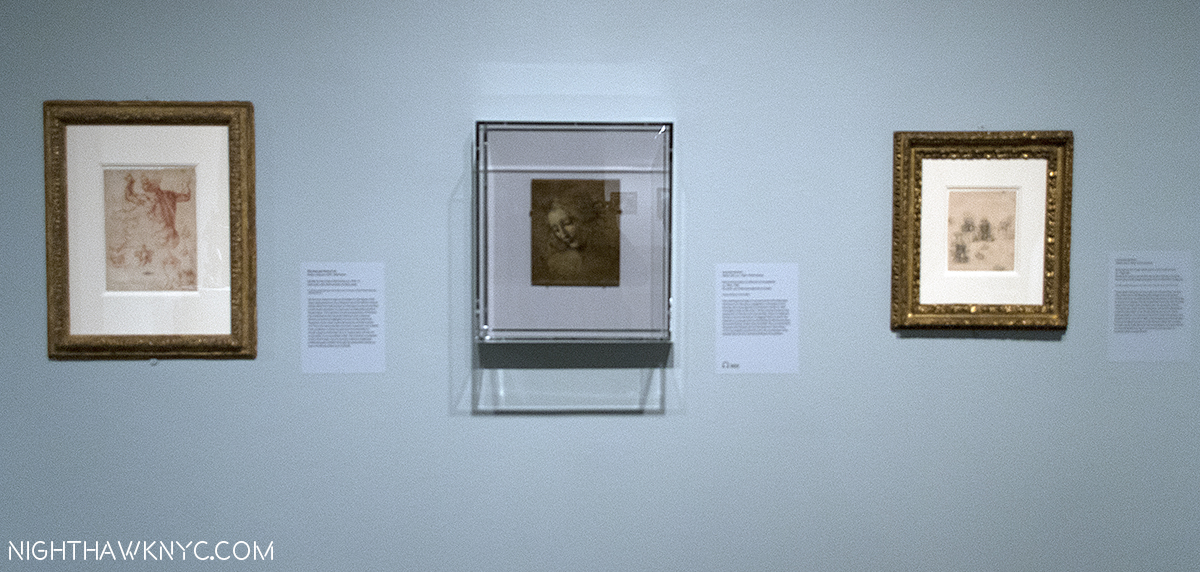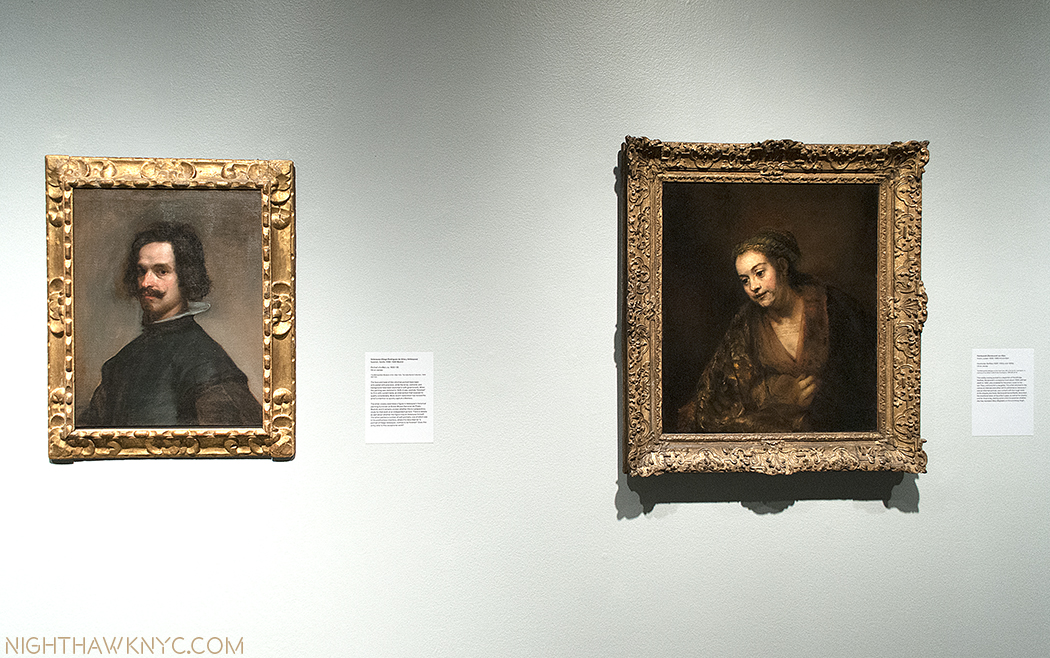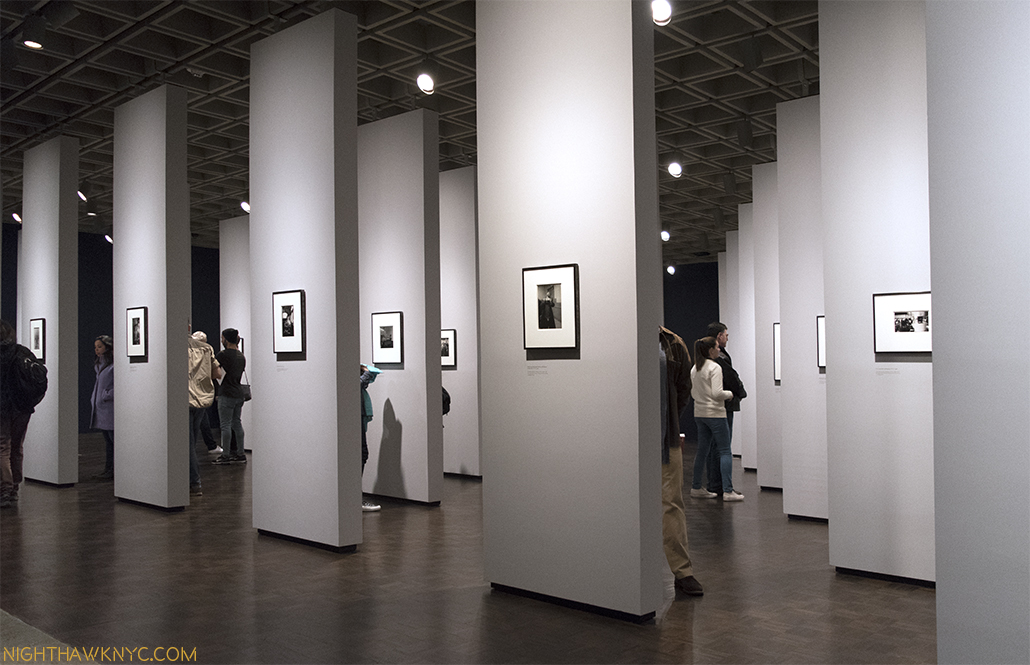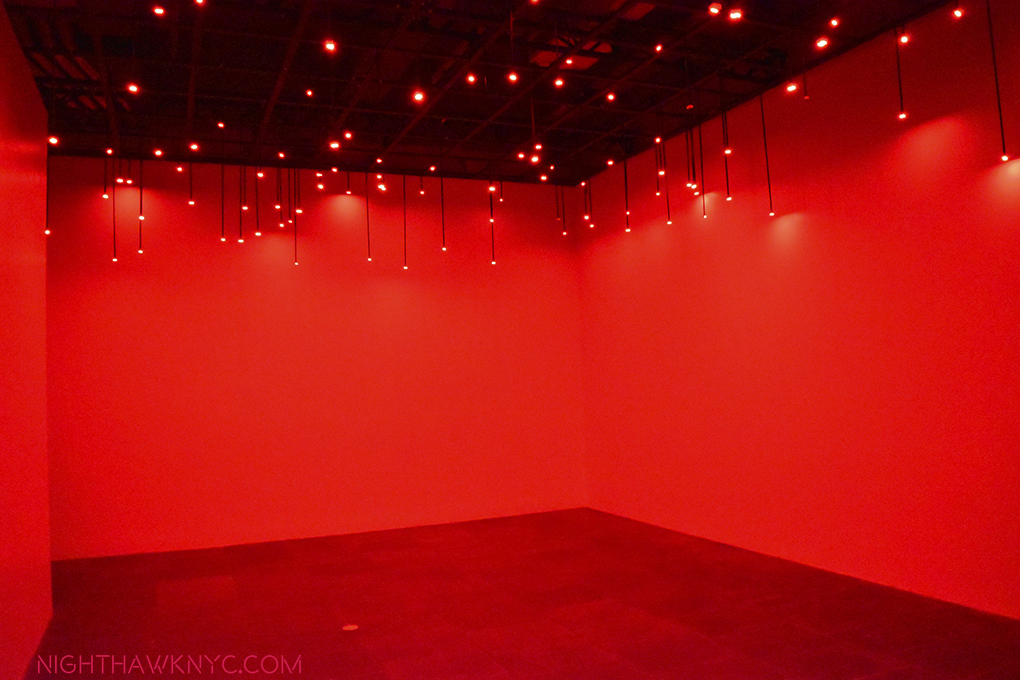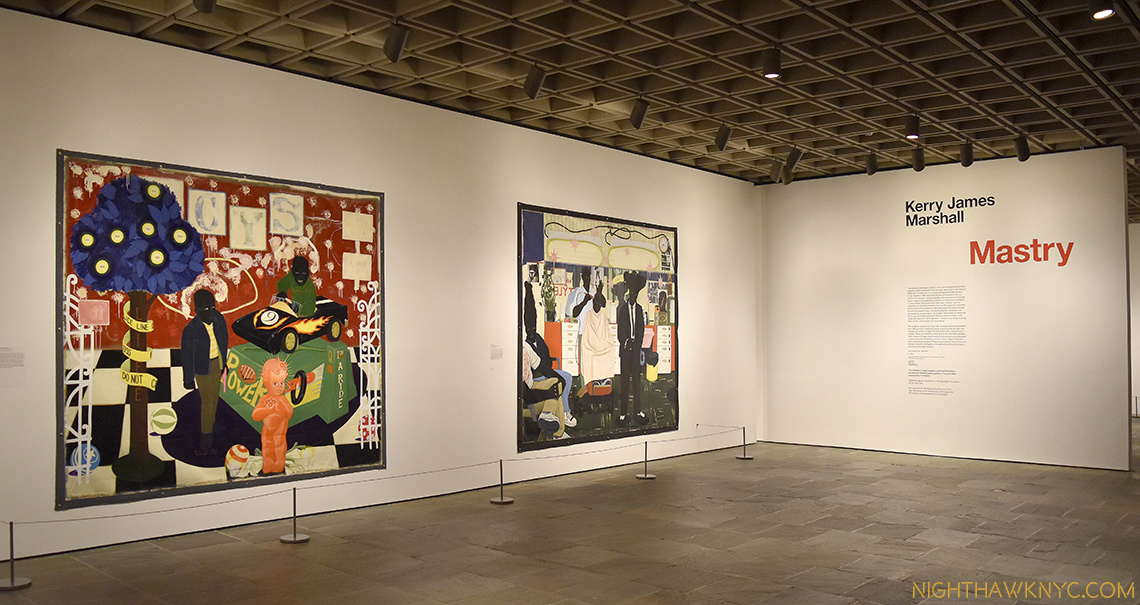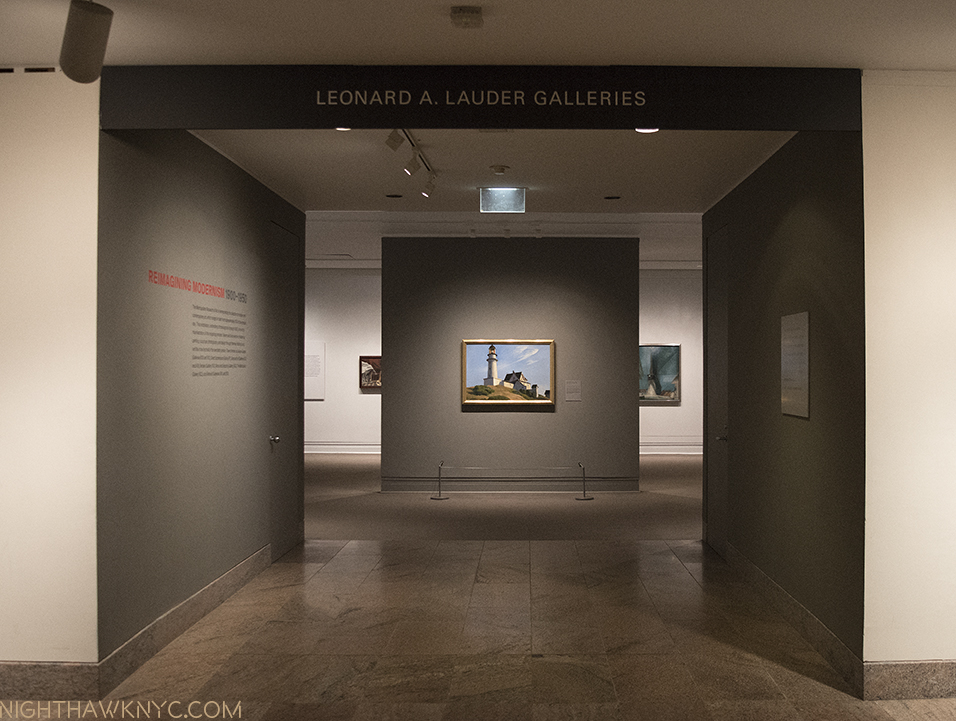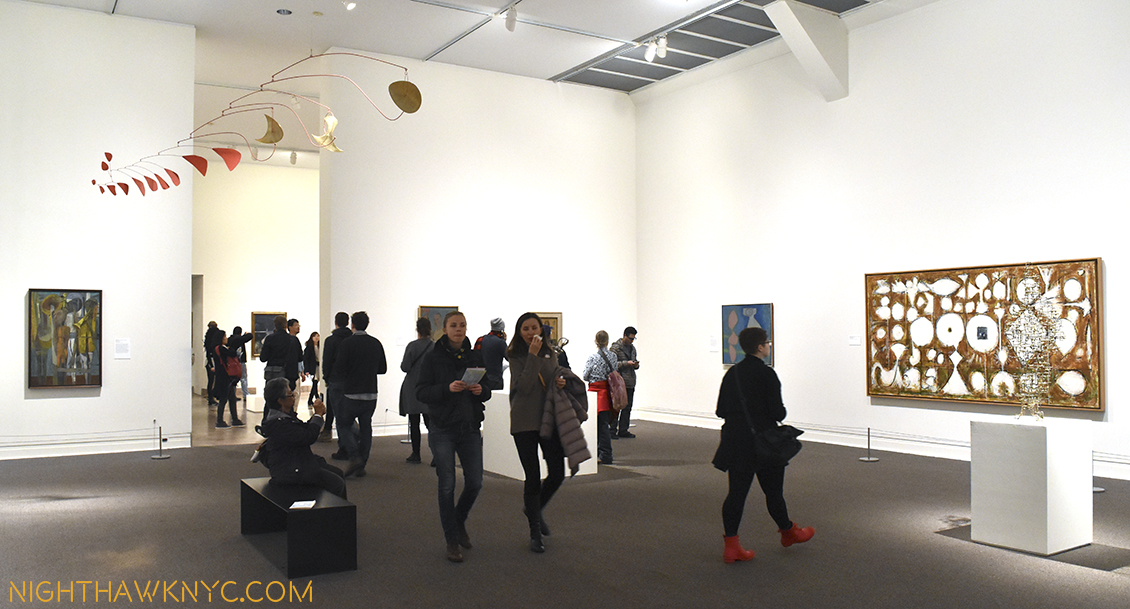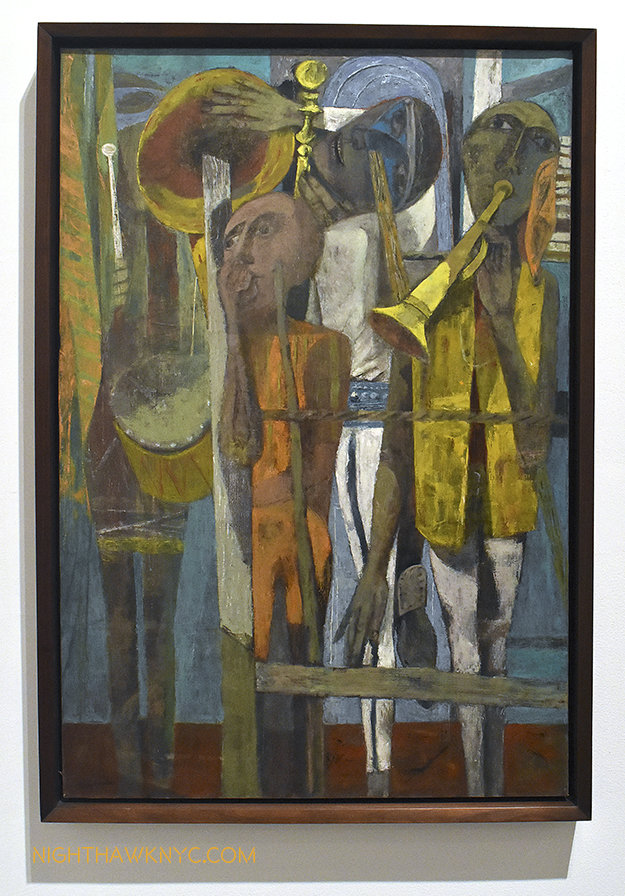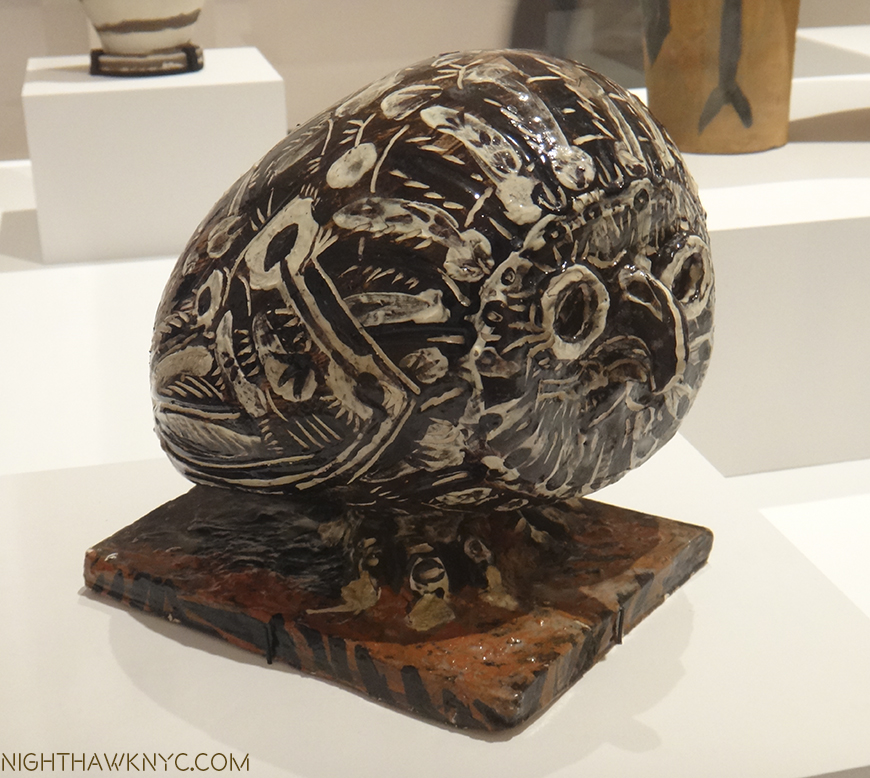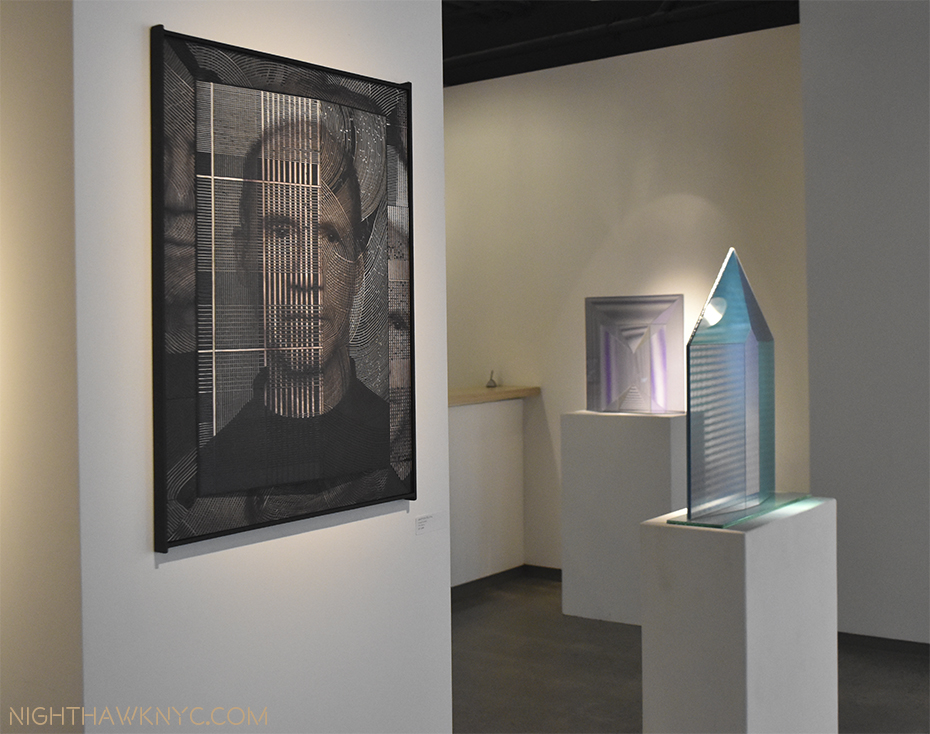This site is Free & Ad-Free! If you find this piece worthwhile, please donate securely by PayPal so I can continue writing. You can also support it by buying Art & books! Details at the end. Thank you.
Written & Photographed by Kenn Sava (*unless otherwise credited)
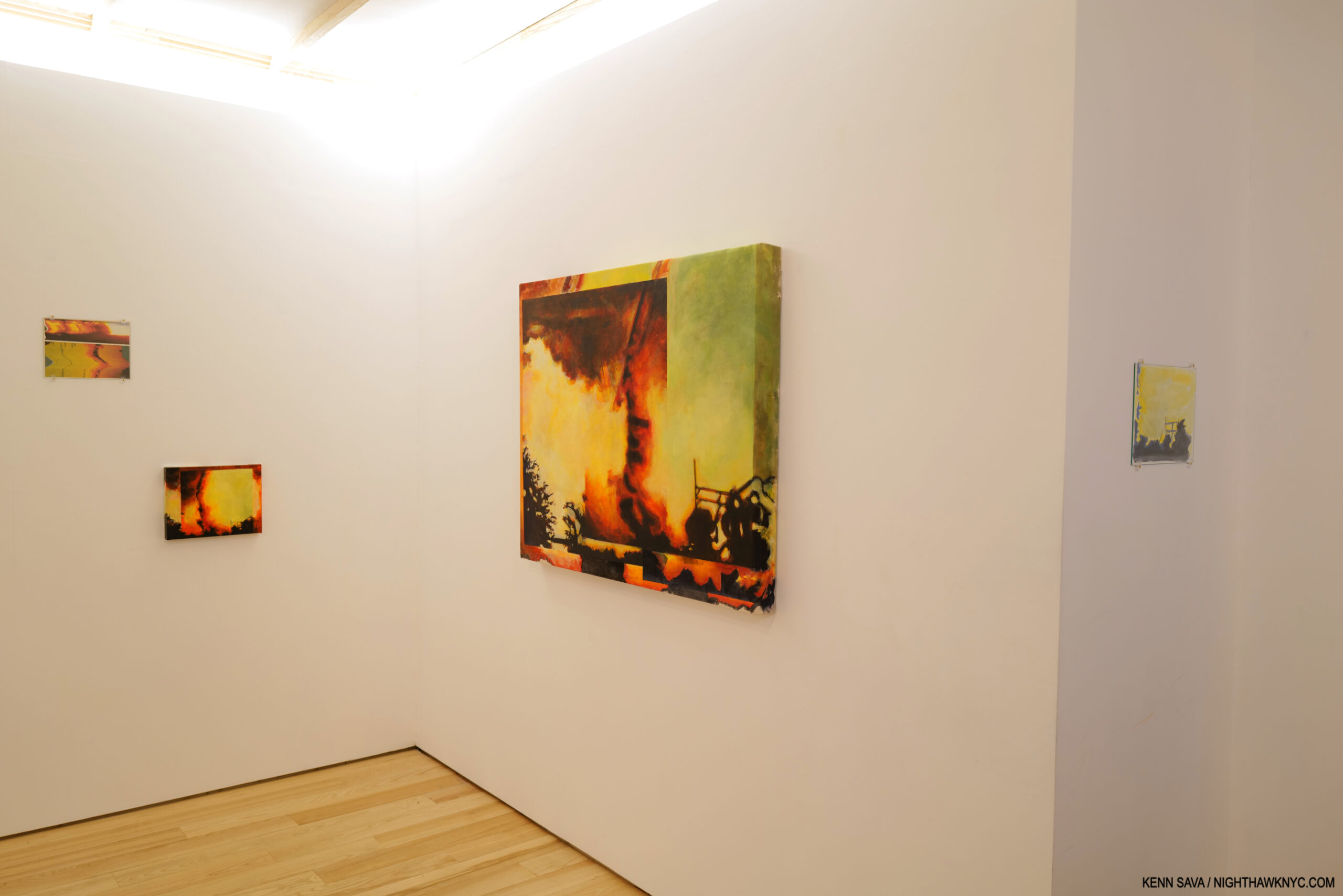
Installation view, Caslon Bevington: Duping False Landscapes, Ki Smith Gallery, East 4th Street section.
“I can hear the nation cry
You will set the world babe
You will set the world on fire
You will set it on fire”*
The late David Bowie was, along with everything else he was, a passionate Art collector. As far as I know, he never got to see the work of Caslon Bevington, so I am willfully borrowing his words in speaking about her Art, and her startling new show, Caslon Bevington: Duping False Landscapes, at both of Ki Smith Gallery’s new East Village locations. In it, she has set the world on fire. More about that in a bit.
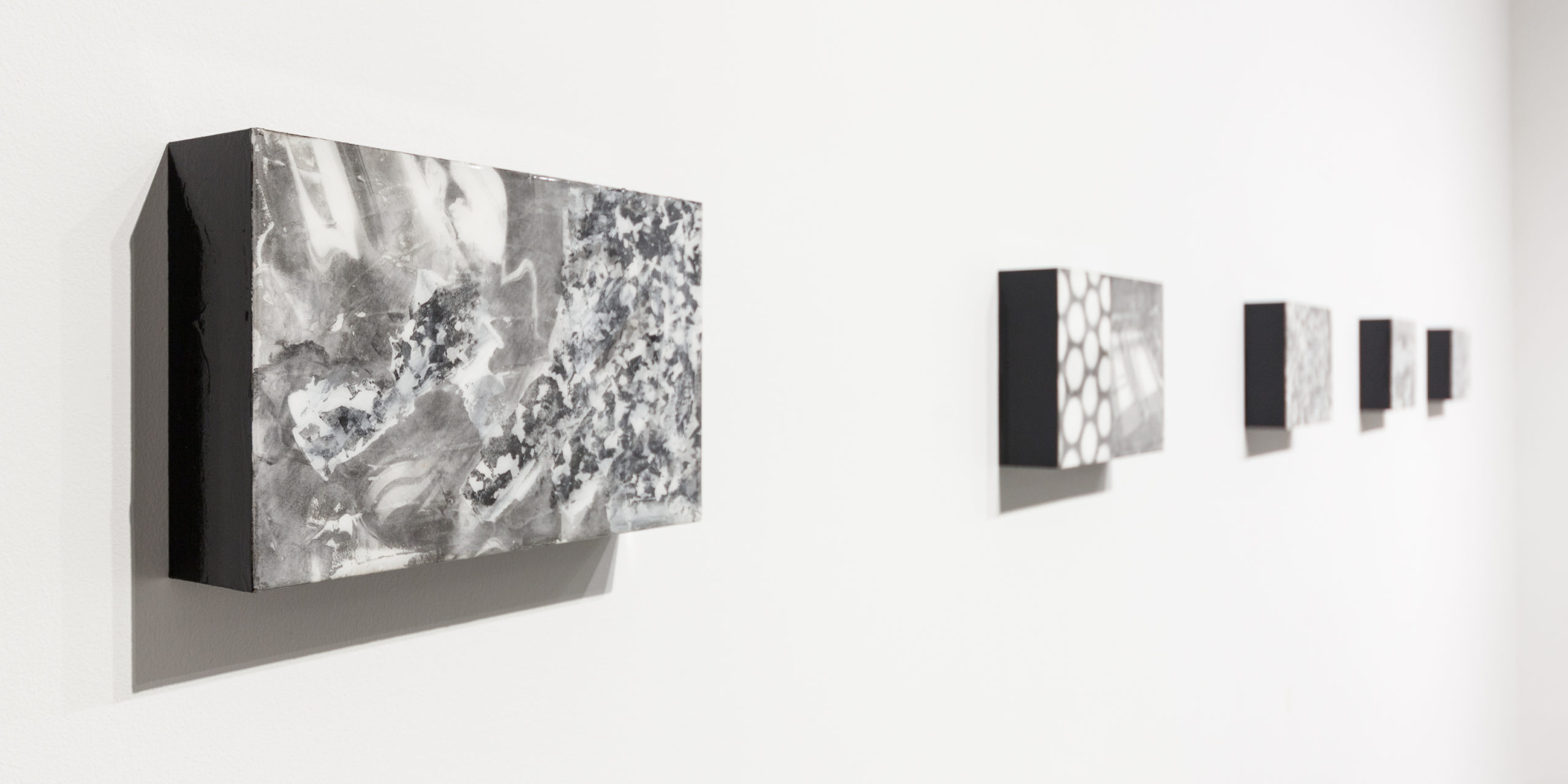
Flashback: Installation view of Caslon’s 2017 show at Mana Contemporary. 4 pieces from her Translations series. *Photo by Roman Dean.
I, however, am not a stranger to Caslon’s Art. Having met her earlier in 2017 at a Raymond Pettibon show, that September 20th, I actually left Manhattan to see her show at Mana Contemporary in Jersey City. Finding my way out there, I was stunned by what I saw, and proceeded to write about it here. It’s a show that has stayed with me; in these intervening five years, my appreciation of it has continued to grow. At that point in early Fall, 2017, eternally a “Painting guy,” I was 2 months away from beginning my “deep dive” into Modern & Contemporary Photography (i.e. the period from the publication of Robert Frank’s The Americans in 1958-59, to date) which has continued to the present moment. When I saw what Caslon was doing with her Photo-based pieces, I was coming at it from Painting and Print making. Now, I also see it through the lens of the past 5 years, the x-thousand PhotoBooks and hundreds of Photo shows that have passed in front of my eyes, and what those Photographers have been doing these past 60+ years. (Of course, there is some overlap: many Painters are/were, also, Photographers, and vice versa.) As I wrote, I believed she was on the edge of what Artists were doing with Photography, or Photo-based work. Five years later, I can’t say I’ve seen anyone else doing quite what she was doing then especially with her small, rectangular back & whiteTranslations series. Caslon was making what struck me as ground-breaking work.
Think about that for a moment.
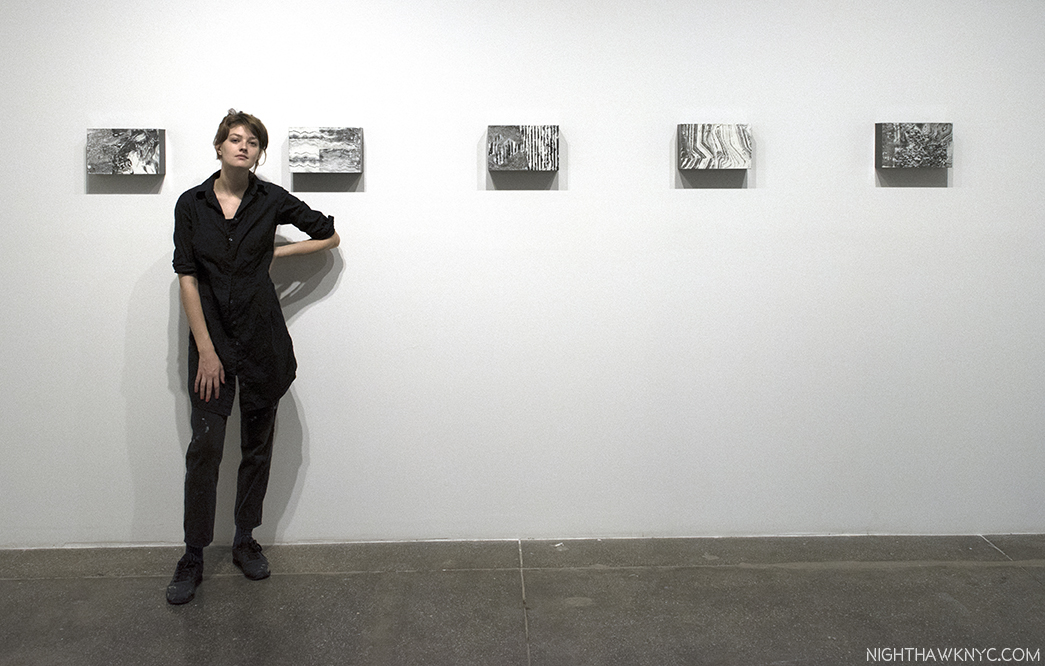
Caslon Bevington seen with Translations #10, 11, 12, 13 and 14, 2017, left to right, at Apostrophe NYC’s gallery at Mana Contemporary, Jersey City, September 20, 2017.
In 2017, Caslon Bevington was about 25 years old! I just referenced “60+ years” of the history of Photography, and after seeing all those books and all those shows- a number of which I have written about in these epages, before saying “I can’t say I’ve seen anyone else doing quite what she was doing then.” That’s pretty remarkable.
Yet, does that make it Art with a capital “A,” as I write it with when speaking about great Artists? No. It doesn’t. And Art, for me, is all that matters. I want to see, and write about, Art with a capital “A;” the stuff that has a chance to hang on museum walls one day. The stuff with staying power, that keeps people looking at it again and again, finding something new in it each time, or having it “say” something different to them each time they look at it.
But, it’s made her an Artist to keep an eye on. Since that day in 2017, I’ve done just that. Now, here I am five years later, driven to write about her work, again…
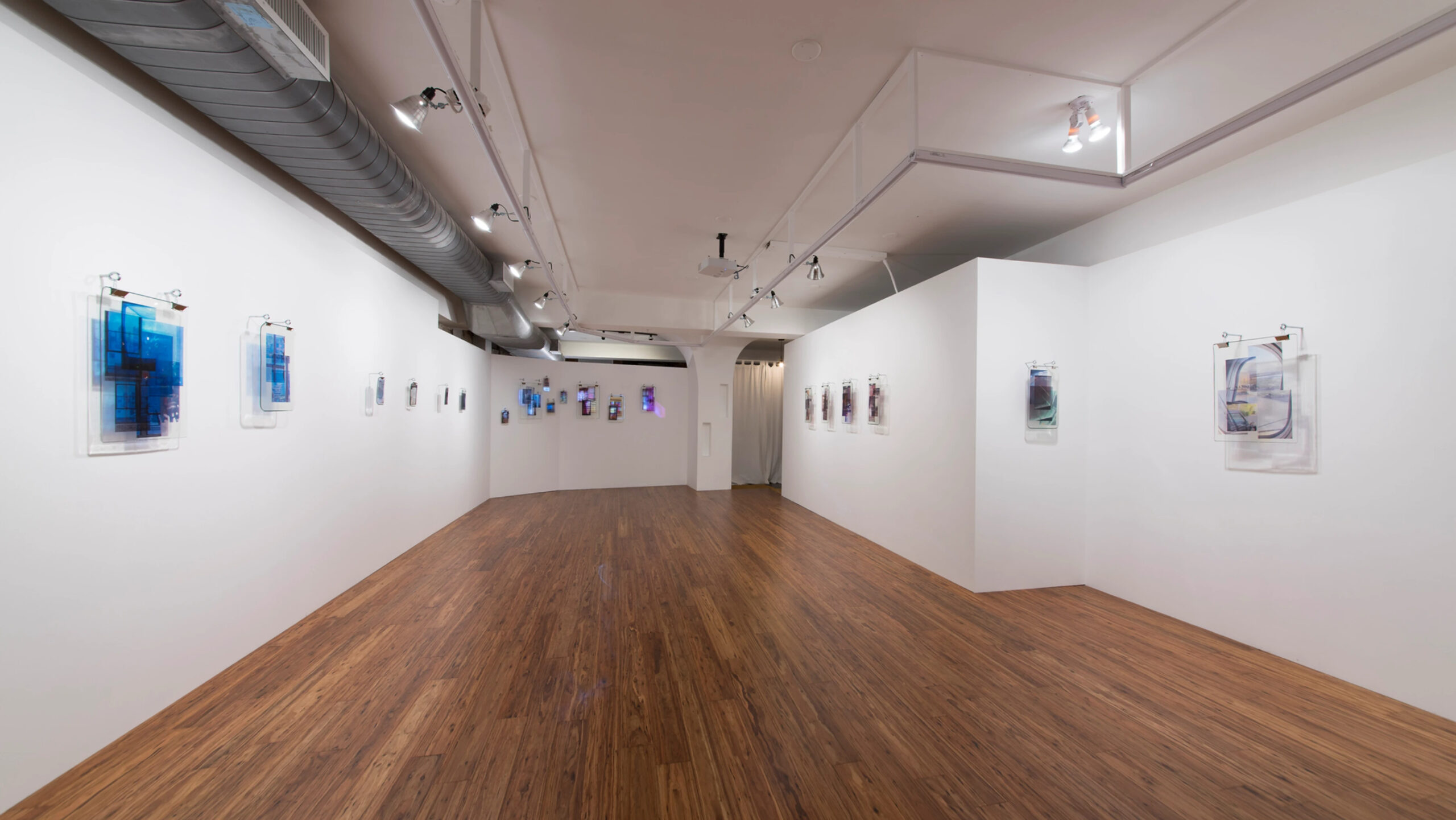
Installation view of Caslon’s 2019 show, unused, undone, ect., perhaps, at Ki Smith Gallery, 2019. *-Photo by Roman Dean for Ki Smith Gallery.
It turns out I missed her 2019 show, Caslon Bevington: unused, undone, ect., perhaps, her first for Ki Smith Gallery, and my impressions of it comes from a few installation shots and one or two pieces I’ve seen first-hand. My impression was that she took one of digital media’s essential innovations, the layer, and brought it into the analog world of matter using one of the natural world’s most essential agents: light. From what I’ve seen, the results were wonderfully effective. It’s perhaps due to the difficulty involved in making these pieces that few, if any, other Artists have tried to make them.
She crafted hanging Photo-based polyurethane objects that were varying degrees of transparent, translucent and opaque that created luminous experiences, somewhat akin to 21st century analog/digital stained glass windows, that transported the viewer through a portal into another realm. In their press materials, the gallery revealed that one collector ingeniously installed a group of them leading up a stairway to wonderful effect.
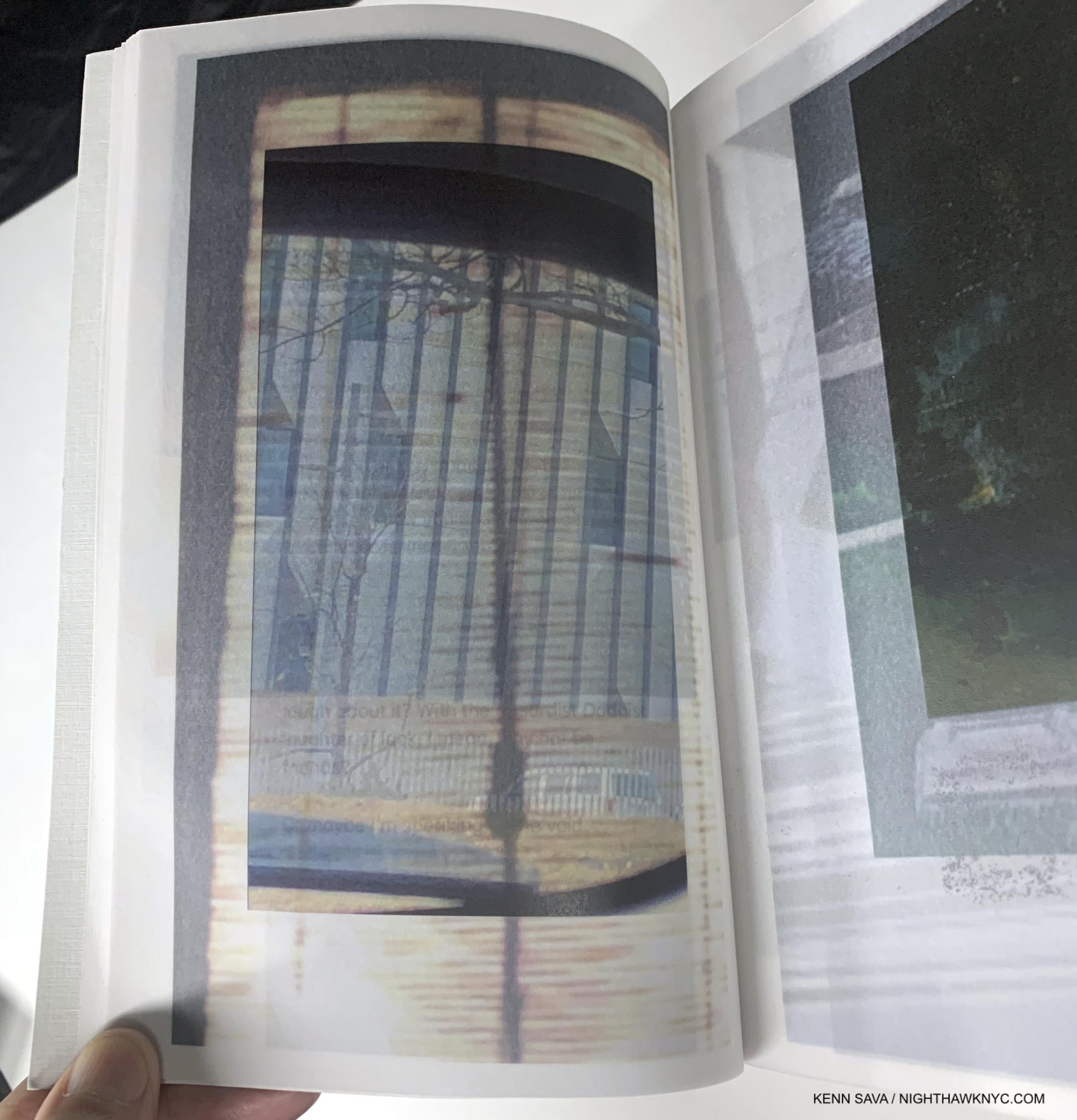
A page from her extraordinary book, unused, undone, ect., perhaps, which collects her Photo archive, published by Ki Smith Gallery in 2019 in conjunction with with Handle With Care Books in an edition of just 25 copies.
Sorry I missed the show since hearing about it after it was over, I was very fortunate to get a copy of the book Caslon published with Ki Smith Gallery for the show that collected the Artist’s Photo archive that evoked a bit of what these pieces must be like. When I saw the book, in the vacuum of having missed the show, I was so captivated by it, I told the Artist and Mr. Smith that if I had seen the book in 2019 it would have been my NoteWorthy PhotoBook of the Year! Remarkable when you consider that Caslon does not call herself a Photographer.
Three years on, it still would have been.
As I’ve seen in so much of her work, and one of its defining characteristics, the book speaks to the Artist’s ability to take digital artifacts (pictures and texts) and translate them into “the analog world” in a wide range other hands-on mediums, including books. Published in an edition of just 25 copies, it’s virtually impossible to find now, which is a shame. I believe that had it been more widely seen, it’s a book that would have made Caslon much better known.
Fast forward to April Fool’s Day, 2022, her new show, Duping False Landscapes, is installed at both Ki Smith Gallery East Village locations. Stopping in to their East 4th Street space first, Ki Smith mentioned to me that Caslon was a Painter when he met her circa 2015, before moving away from it to explore other mediums! Being a “Painting guy,” I was pleasantly shocked to hear this. Only one Painting was shown across both her 2017 and 2019 shows (shown in my 2017 piece on her), and the number of works in other mediums would give a different impression. It struck me that here I was already taken with her work, having written about her 2017 show, and I’d only seen one of her Paintings!
That revelation also gave me a new appreciation for her 2019 pieces. Now I see them as quite daring explorations that look quite successful to my eyes. I digressed…
Her new show proved a deja-vu experience all over again. The wall facing the front door was lined with 8 striking image or Photo-based prints, seen to the right above, that brought me right back to her 2017 show. Robert Rauschenberg, Wade Guyton, Jeff Elrod, Nico Krijno, Chris Dorland, and others crossed my mind, but I immediately stopped myself when I realized these were an evolution from what I saw in her own work in 2017, now in color, and in a single image, each. (The 2017 show featured a few pairs of images in one piece as you can see earlier.)
These were new, fresh, exciting pieces, that seemed to me to be downright “painterly,” vibrantly colored & printed. I stopped caring how the images were manipulated and just enjoyed looking at them. Most of all, they are just beautiful- a word seldomly, if ever, applied to such work. Some look like snap shots in a family album that has been thumbed through so often the prints have faded from light and time, but it all just works and holds together remarkably as a group (though they are not a series). These new prints provided me with a bit of continuity with what I had seen in 2017, and they set the stage for the rest of the show.
On the left wall was the show stopper of both shows. The endlessly mysterious “Sunset from Moving Cars (Revisited),” 70 by 53 inches, Acrylic on canvas, with about another 6 inches of Painted canvas exposed on the sides. It turned out to be a bit of a harbinger of what I would see in Part 2 of the show on East 3rd Street. The Artist seems to be drawn to fleeting images taken on the fly, like from a moving car, here. By title, it was also the first “weather-related” and the first sun-related piece in the show.
Between the two new installations, I counted 15 Paintings ranging in size from 4 by 6 inches, to 70 by 53 inches that mark her return to Painting in a big way! There are also about a dozen prints and 2 works on Terracotta also on view that continued her exploration of mediums. (In 2017, she gave me a tour of her studio at Mana and showed me a large work made out of a king-size box spring (shown in my 2017 piece)!)
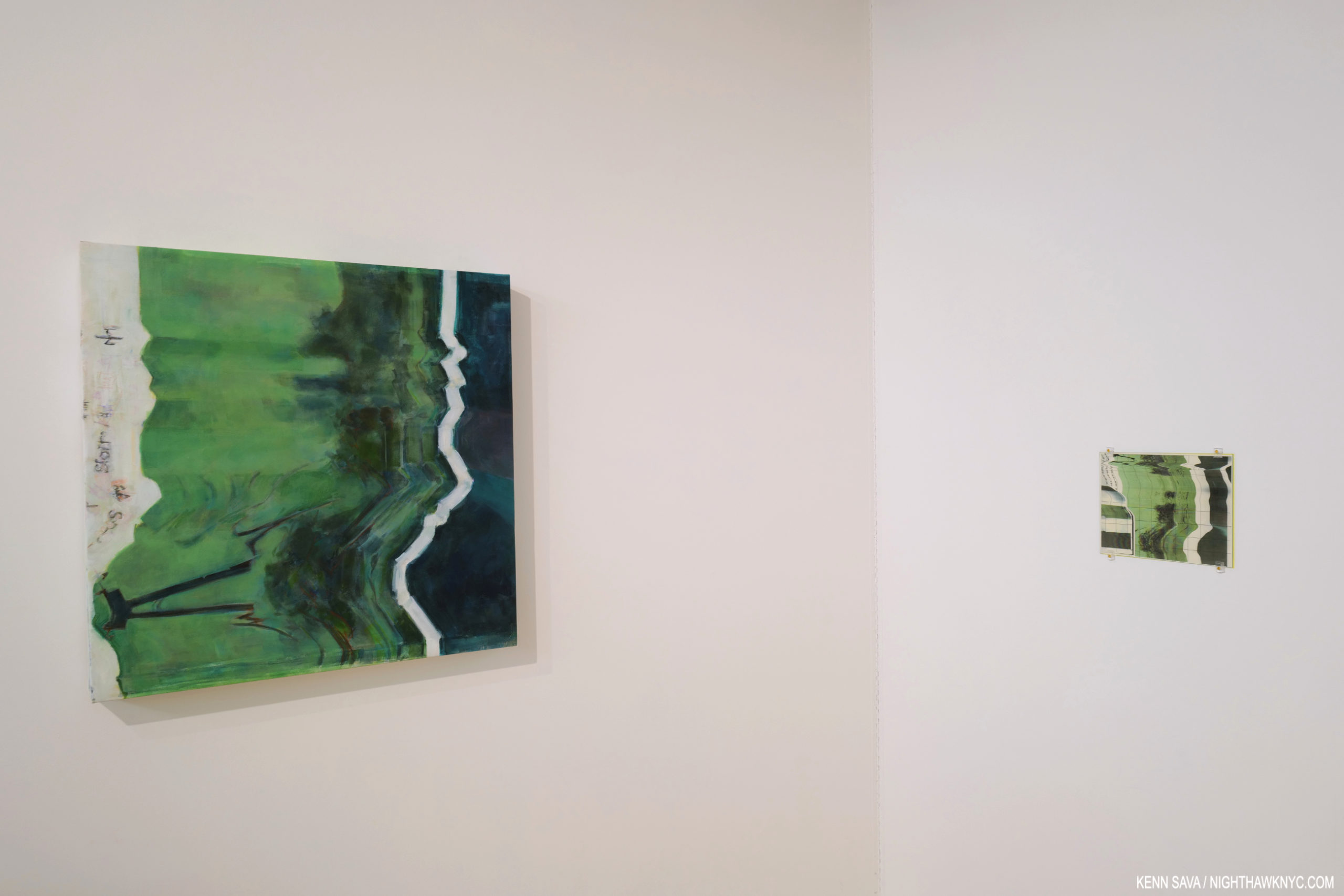
Counterfeit Weather, 2022, Acrylic on canvas, 29.5 inches square, left, and Untitled, 2022, Inkjet on archival vellum, 8.5 by 11 inches, right.
Moving over to the East 3rd Street space, there were more Prints on view, to the same effect. However, at the far end of south wall was something else. On the corner wall was a large Painting, Counterfeit Weather, 2022, that was seemingly influenced by the Print, Untitled, 2022, Inkjet on archival vellum, hanging just to its right. Here was a Painting that may be inspired or based on a work in another medium. It’s utterly fascinating to contemplate the one and then the other; and their genesis. Paintings have been translated into Prints going back to the invention of printing in an effort to get them more widely seen. It’s rarer to see a Print translated into a Painting- if that is indeed the case here. In fact, I can’t recall one.
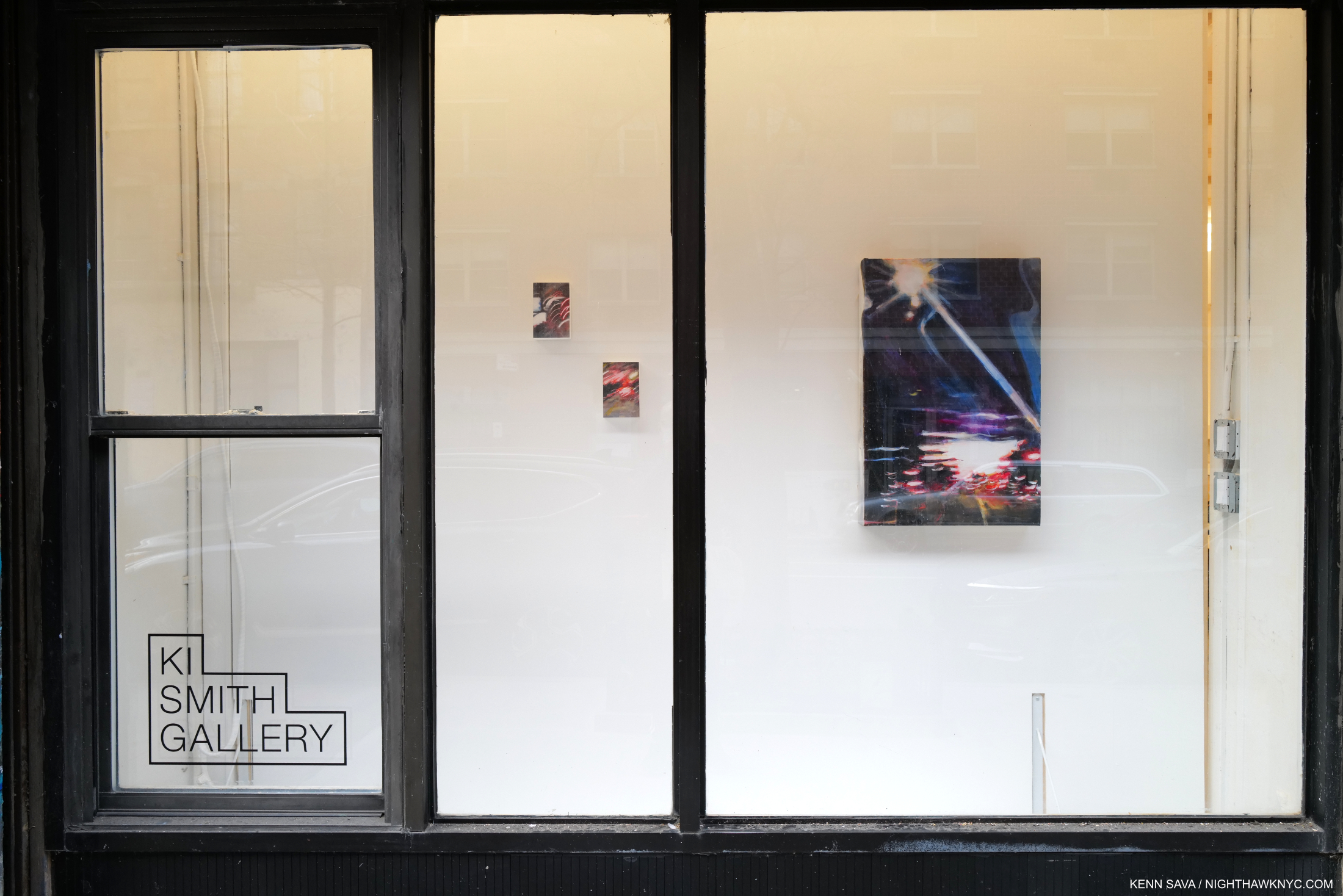
Three Untitled pieces, each from 2022, each Acrylic on canvas, seen in the windows of Ki Smith Gallery’s East 3rd Street location.
As I moved through both shows, one thing that became apparent to me is that Caslon has an exceptionally unique eye, and when all is said and done, I realized THAT is what has drawn me to her work since 2017- even before seeing her Paintings.
A sub-theme of Duping False Landscapes is the Artist revealing the Art in source images that most people would discard; images that are distorted, (intentionally or not), so small as to make detail almost impossible to make out, or of inferior quality born of, what is considered now, “low-tech” devices. Three prime examples of this are featured hanging in the East 3rd Street Gallery’s windows, and that may be why they are there. In them, the Artist has taken 3 blurred photos and renders them in paint! The net effect is the viewer ifs finally forced to stop and consider these images they would, and probably have, ignored. Thinking back through the history of Painting for precedents, Kerry James Marshall’s 7am Sunday Morning, 2003 (as seen in my 2017 piece on Kerry James Marshall: Mastry at The Met Breuer) and Georgia O’Keeffe’s The Shelton with Sonspots, 1926, came to mind. In his, Mr. Marshall has devoted almost half the 120 by 216 inch canvas to depicting the lens flare from his camera pointed at the morning Sun. Georgia confines hers mostly to the upper right quadrant. Still, I can’t really think of another instance where an Artist has done this, and certainly not one where the Artist has made it the subject of an entire piece, in this case at least the 3 pieces seen above.
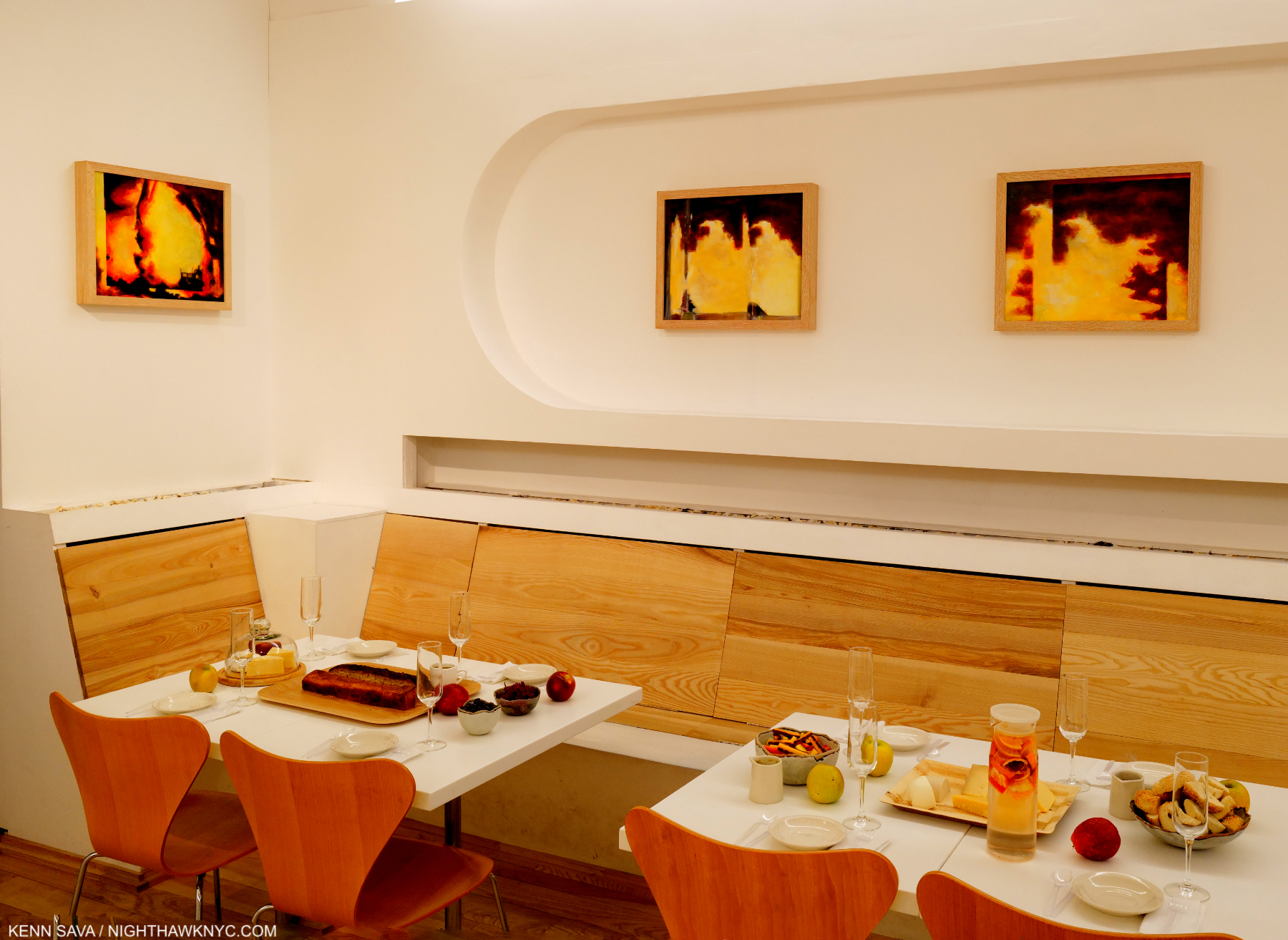
Sunstorm II, 2022, Acrylic on panel, Frictions (Variation B), 2022, Acrylic on Panel and Frictions (Variation A), 2022, Acrylic on panel, left to right, seen during a tea party held at the gallery on April 9th.
There. I said it again. Meanwhile, David Bowie returns.
There are those who believe that Mr. Bowie may have been referring to the great singer Odetta (1930-2008) in his song, “You Will Set the World on Fire.” We’ll never know. Over on the far walls of Ki Smith’s 3rd Street Gallery, Caslon proceeds to set the world on fire. In paint. A series of four Sunstorm Paintings, each dated 2022, and two that appear to be somewhat related, titled Frictions, seem to literally burn up their panels, canvasses and the walls around them. Apparently, they are based on an old, small Photo, which doesn’t lend itself to enlargement, and hence allows the imagination (her, then ours) to complete their details.
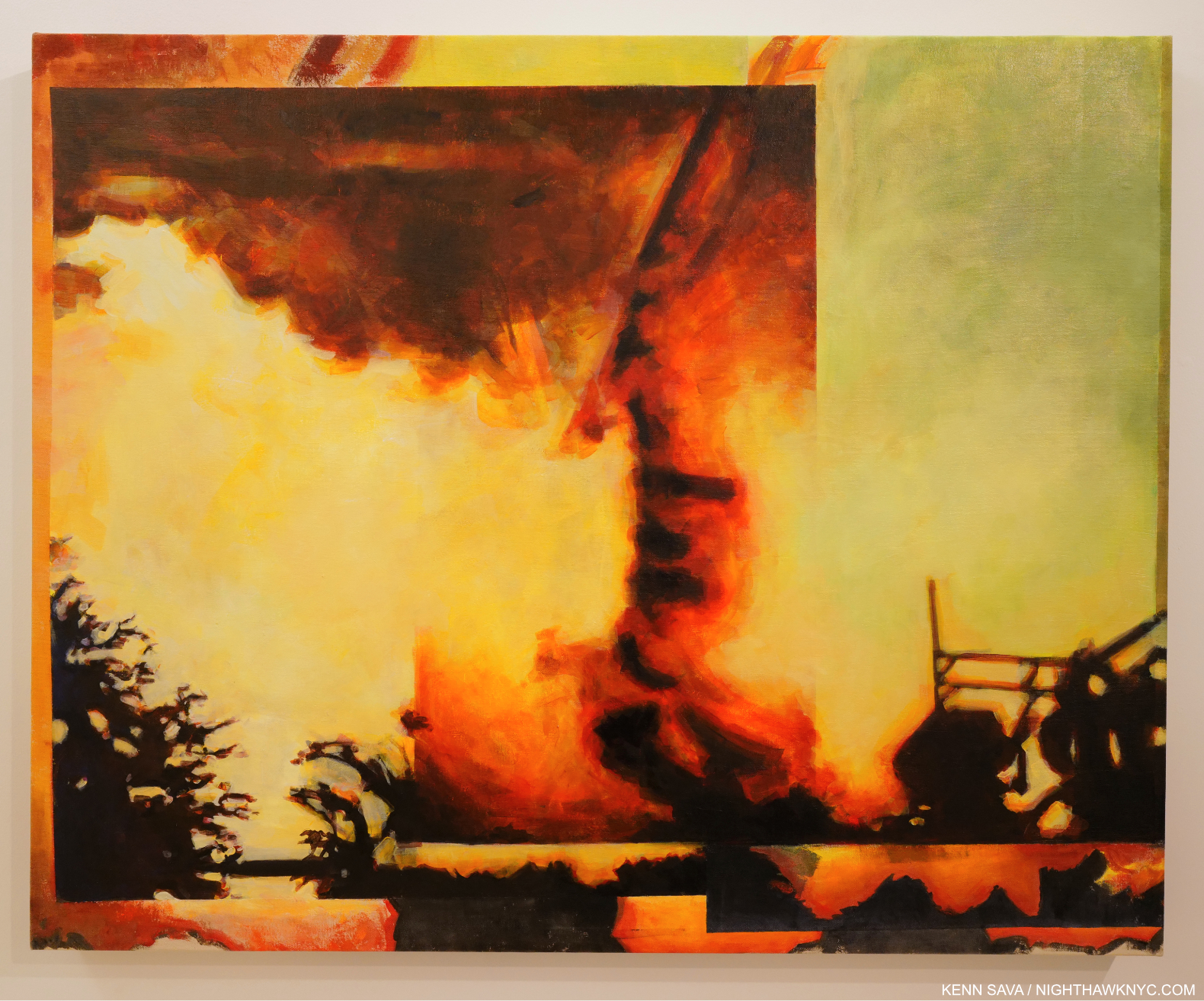
Sunstorm (Expanded), 2022, Acrylic on canvas, 39 x 49 inches, the largest of the series. There is so much in this that stands out: The surreal way the “fence,” or whatever it is on the right, and the trees on the left, are Painted. The whole bottom edge seems to take us into another dimension, creating an effect like wearing two pairs of glasses, until you realize the whole composition consists of layers! Layers in Painting goes back to Cubism, Kandinsky, and Hilma af Klnt. Still, I can’t say I’ve seen them used like they are in Caslon’s Sunstorm series, and in other works of hers. Also, consider perspective in this, or any of her Paintings in this series. Just when you think you see a vanishing point by following the “fence,” you have to consider the fact that this section of the work is just one layer! Instead of giving us one vanishing point, the Artist makes our eyes move all over the canvas, as much of David Hockney’s work this century does. Making all of this hang together, and hang together so well, is impressive in my book.
“A good painting has real ambiguities which you never get to grips with, and that’s what is so tantalizing.” David Hockney1.
Exactly what is going on in these works is a mystery. I, for one, don’t want to know much more about them lest it evaporates. Anchored by the ground, and the “fence” in a few, almost all of the rest of each work consists of a huge ball of flame, ostensibly, given the titles, from a sun looming all too large in the sky, at once fascinating and horrifying.
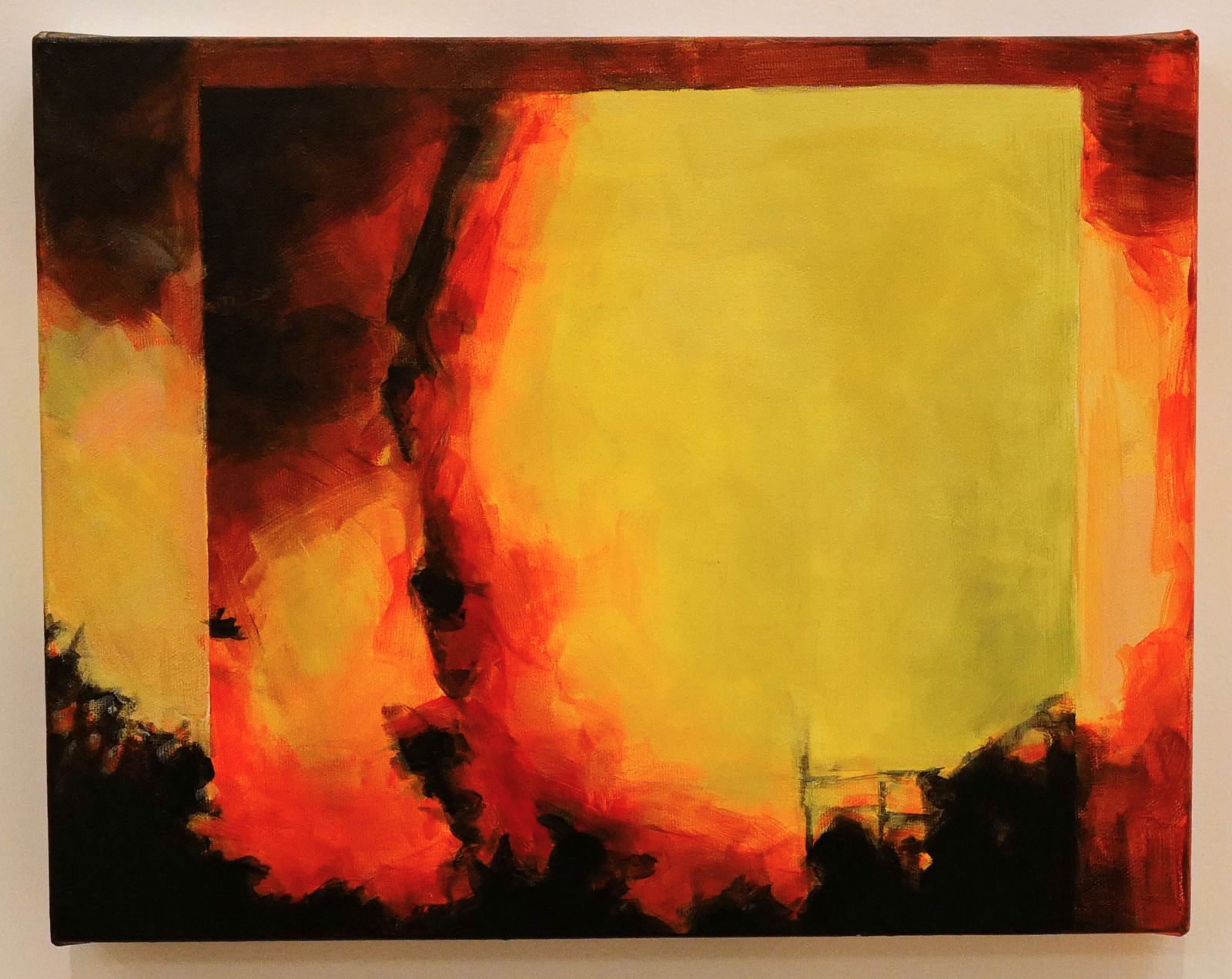
Sunstorm, 2022, Acrylic on canvas. 11 by 14.5 inches. Here, the trees and the “fence” are rendered in a somewhat different way but achieve the same mystery we see in Sunstorm (Expanded), above. Here, the work seems to consist of fewer layers, but again, the question of perspective is, indeed, a question. What might have started out as a distorted or “lesser” quality source image has become something entirely different, and in my view, stunning.
This series adds an ominous atmosphere for the first time (that I’ve seen) in her work. In the two Sunstorms, above, the storms appear to be tornadic. Then she adds something else. Something “more.” What really stands out for me are the multiple layers each Painting features. Multiple Paintings, or part-Paintings, superimposed on the one picture plane. This is a continuation and expansion of the idea the work in her 2019 show presented, and at least one earlier Painting, and again (stop me if you’ve heard this one before) is something I can’t recall seeing in Paintings before (Frank Stella used layers to marvelous effect in Paintings that were collage-like and the layers extended from the surface, imposing on what had been the viewer’s space previously). It’s also remarkable that these and so many other pieces on view date from 2022, a year that was exactly 3 months old when they were hung here.
On the gallery’s right hand wall, shown earlier during a tea party held at the gallery, elements of the striking Frictions series remind me of Clyfford Still, as in Frictions (Variations A), below. Still (sorry), as I’ve learned, looking for influences and precedents in Caslon’s work is both missing the point, and pointless. If there are any influences, she has more than made them her own.
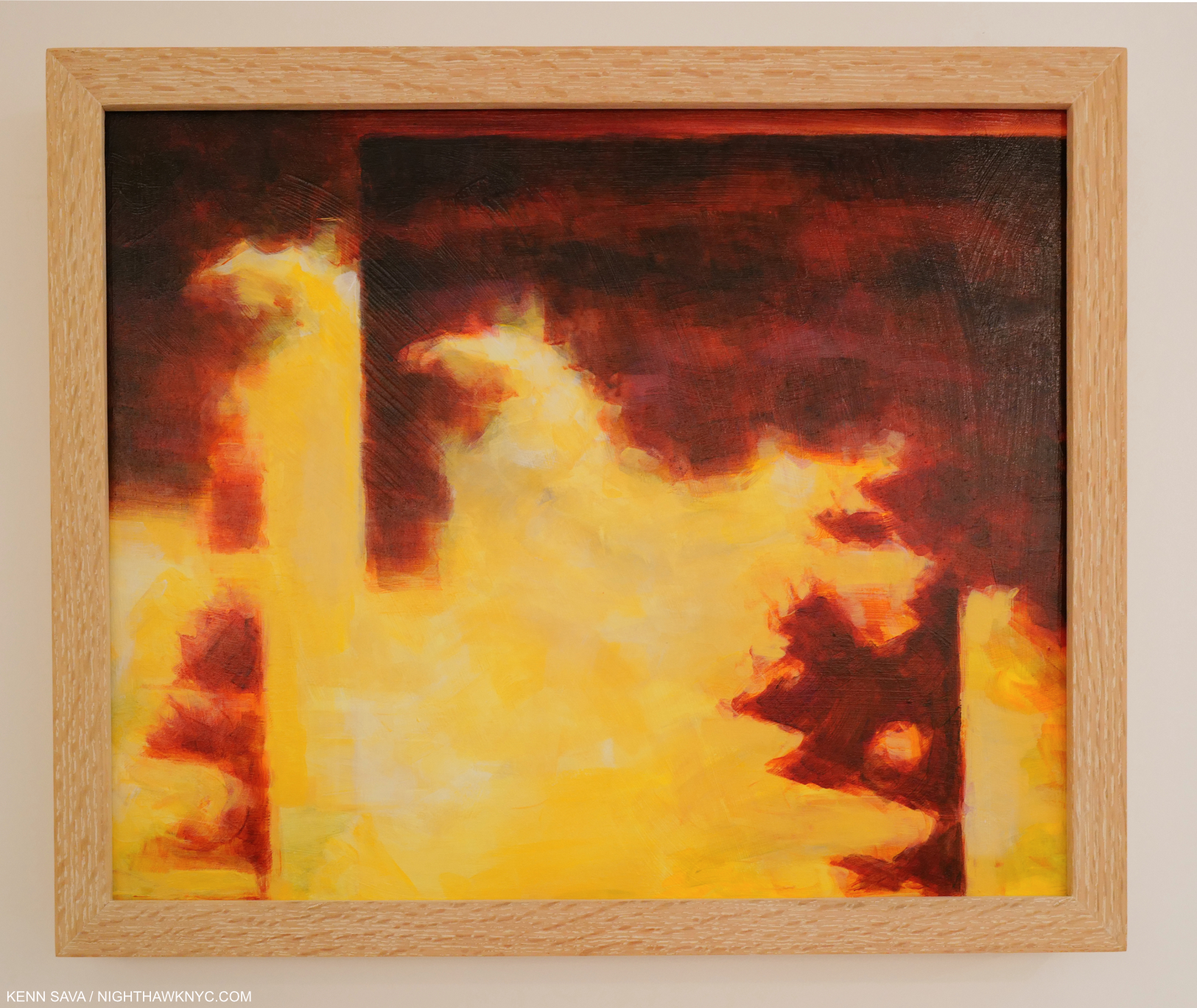
Frictions (Variations A), 2022, Acrylic on panel, 16 x 20 inches. Some might look at this and think “Clyfford Still.”
On a personal level, the fire she depicts has come to represent the passion and energy I see in so much of what Caslon does, both qualities I find lacking in much of the Contemporary Art I see. It’s something that characterizes her work to this point, and along with her eye, is another thing that sets it apart.
Having created further innovations that blur the lines between, and show new possibilities of, the image/the Photograph, the relationship between Photography & Painting, and Painting itself, she’s already broken quite a bit of new ground in her work- something very few Artists, of any age, can say. In 2017, I left her show believing that she was on to something. In 2022, it’s apparent to me that Caslon is now on her way to establishing herself as one of the more interesting Artists working today.
*-Soundtrack for this Post is “(You Will) Set the World on Fire,” by David Bowie, from his 2015 album The Next Day.
NighthawkNYC.com has been entirely self-funded & ad-free for over 8 years, during which 300 full-length pieces have been published! If you’ve found it worthwhile, PLEASE donate to allow me to continue below. Thank you, Kenn.
You can also support it by buying Art, Art & Photography books, and Music from my collection! Art & Books may be found here. Music here and here.
Written & photographed by Kenn Sava for nighthawknyc.com unless otherwise credited. To send comments, thoughts, feedback or propositions click here. Click the white box on the upper right for the archives or to search them. Subscribe to be notified of new Posts below. Your information will be used for no other purpose.
- Hockney on Photography, P. 18 ↩

